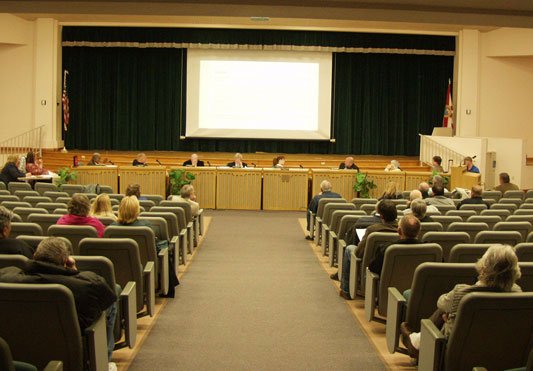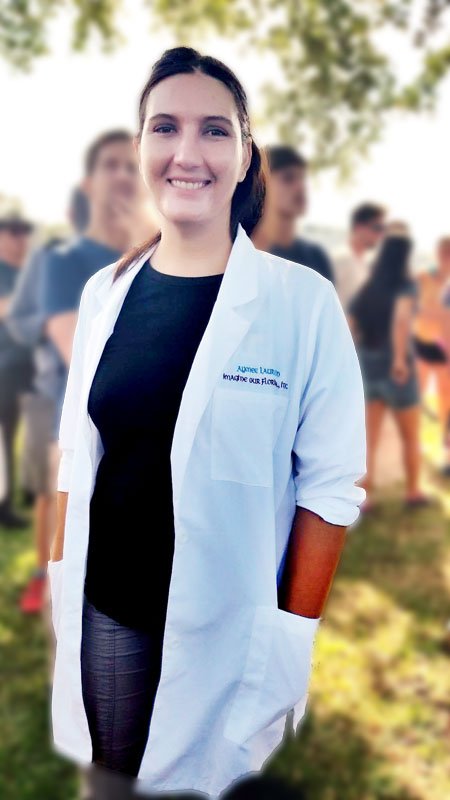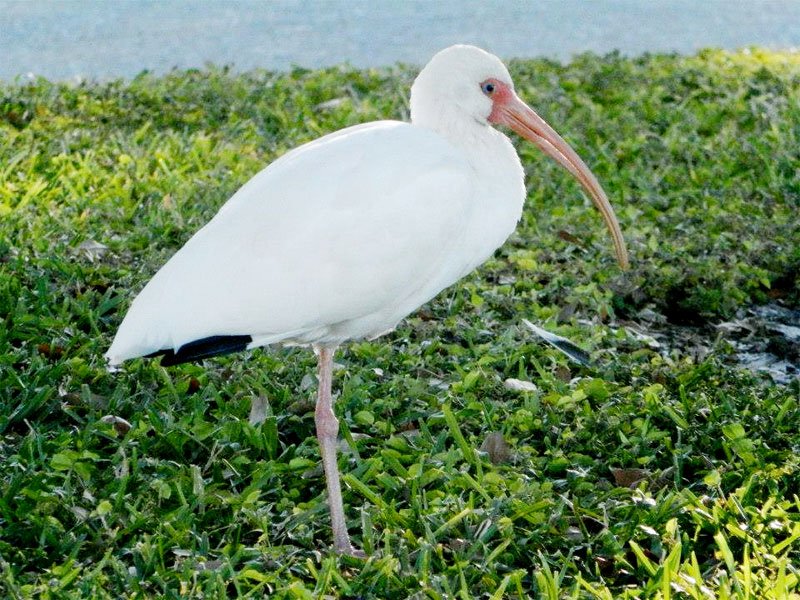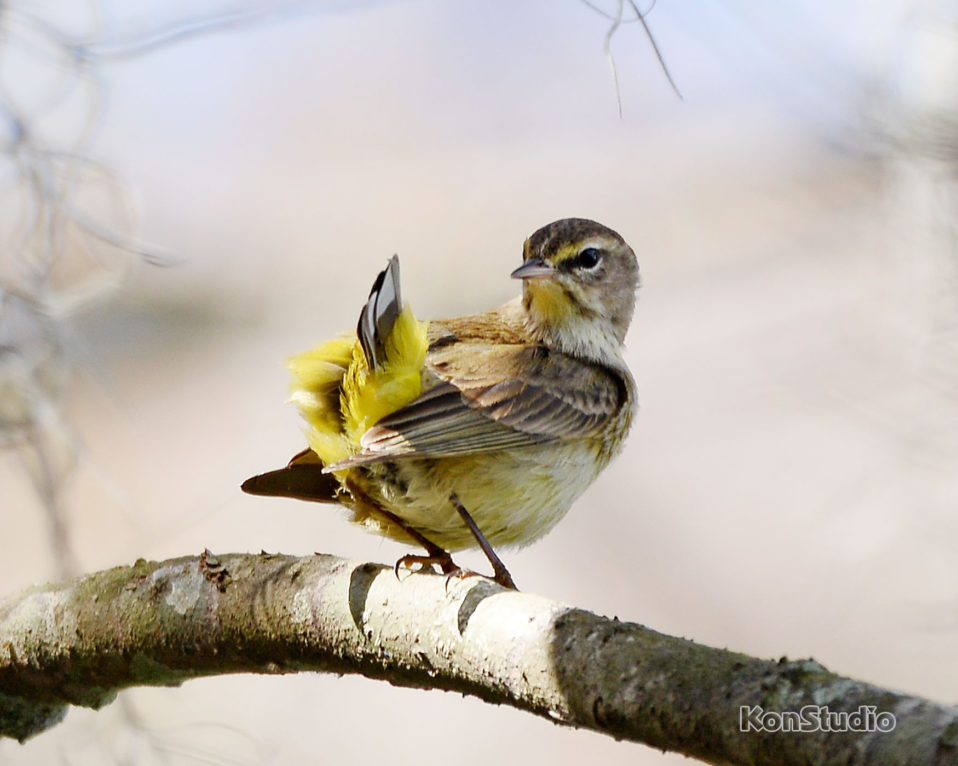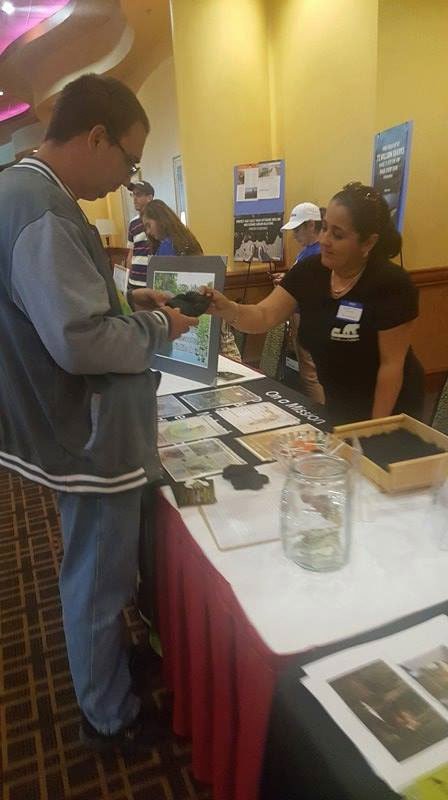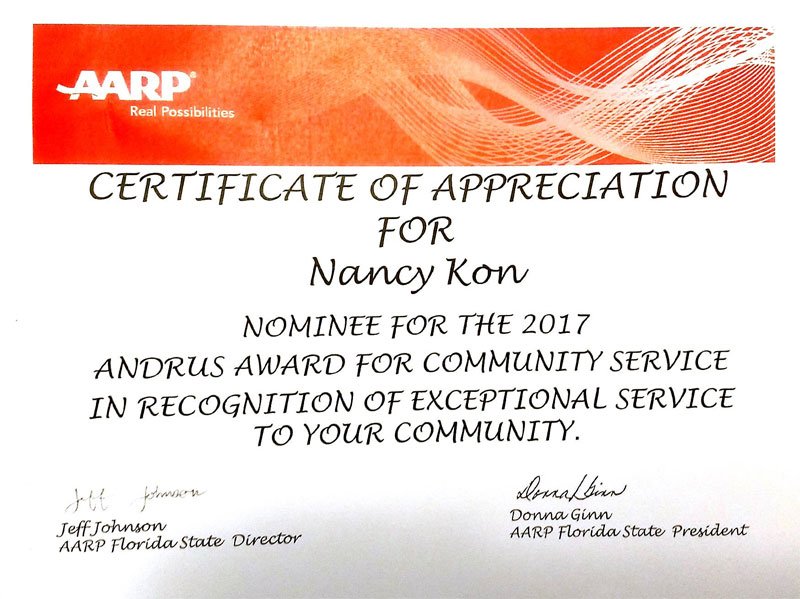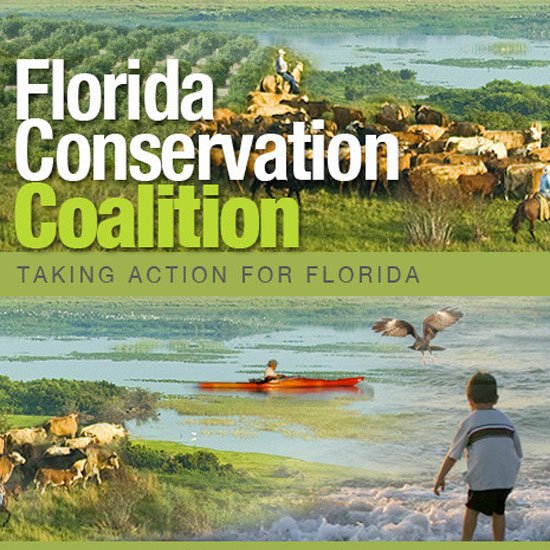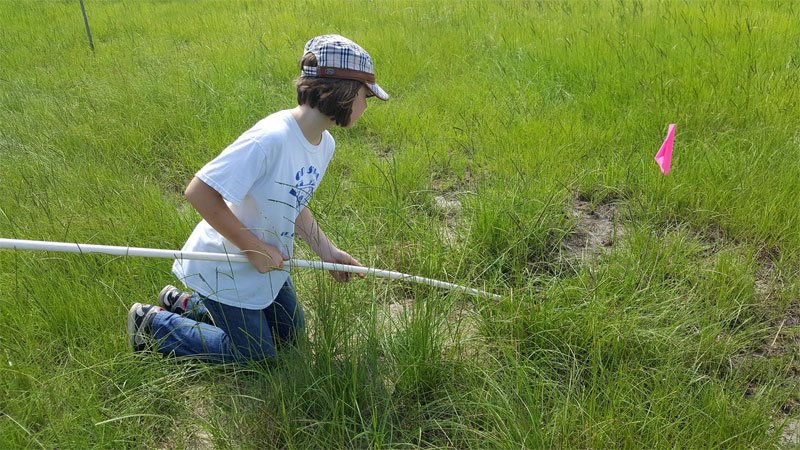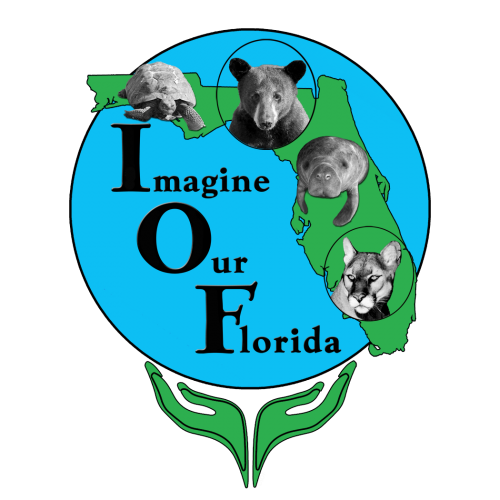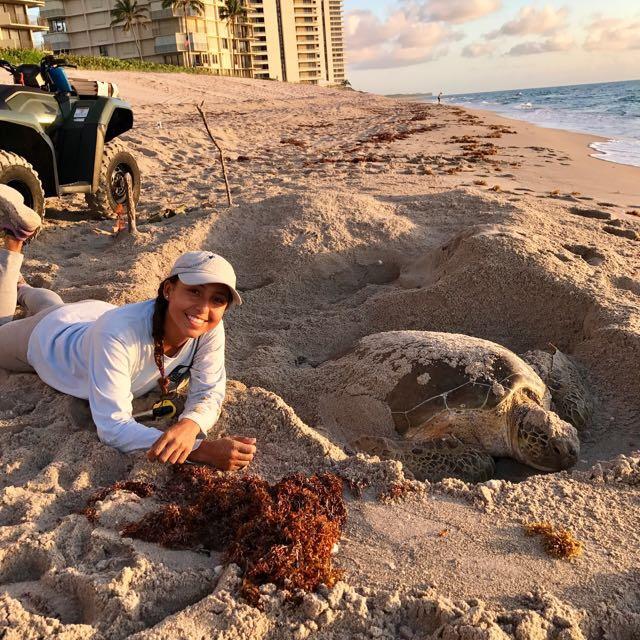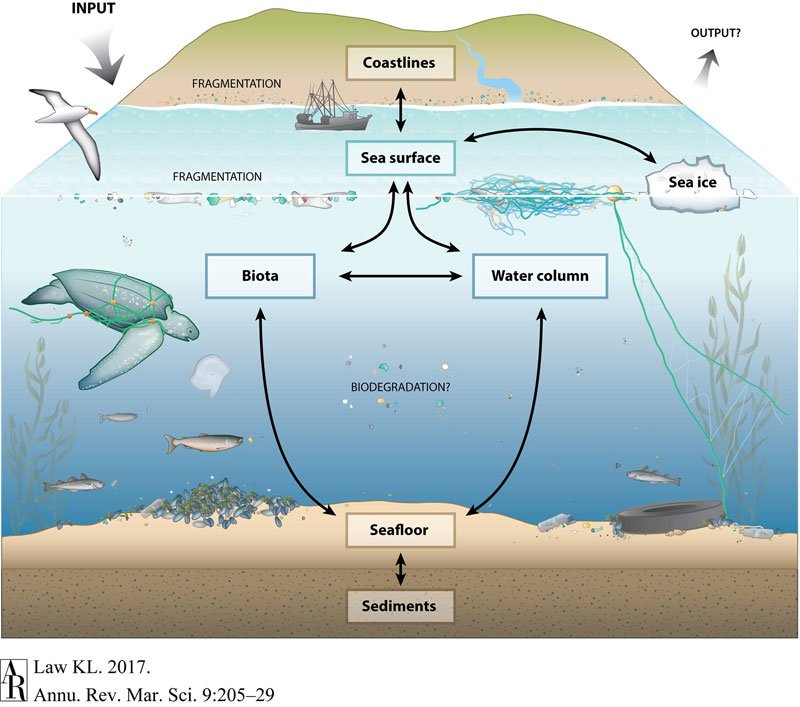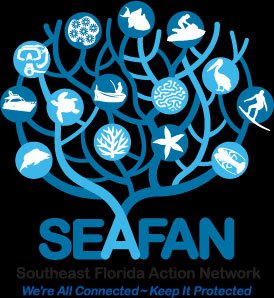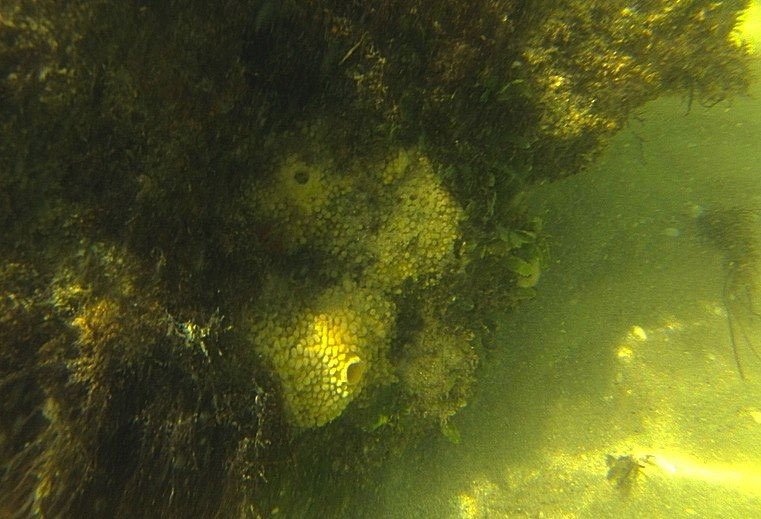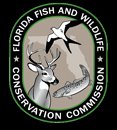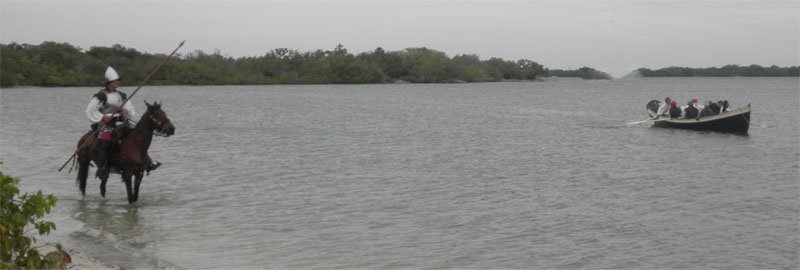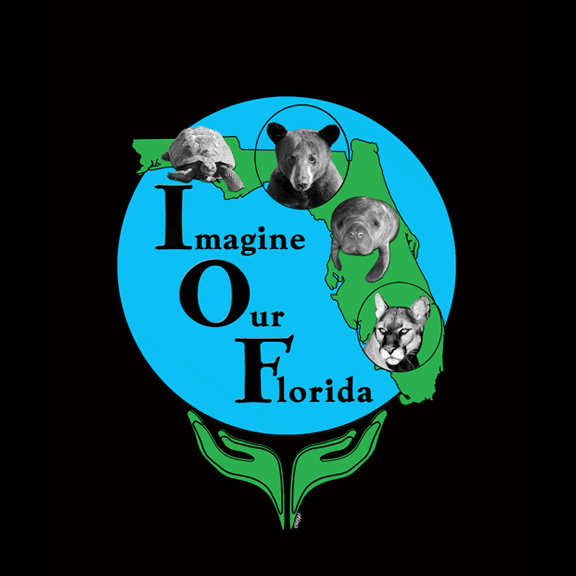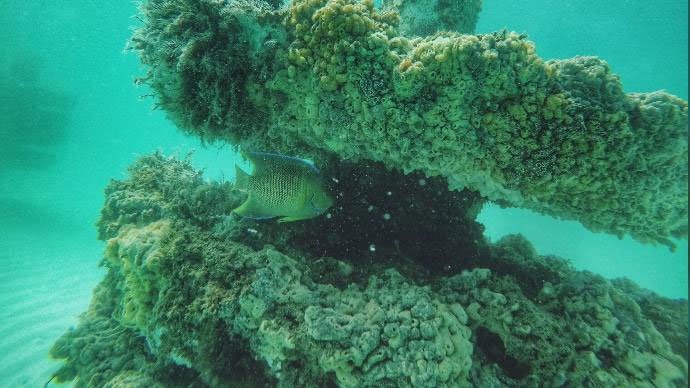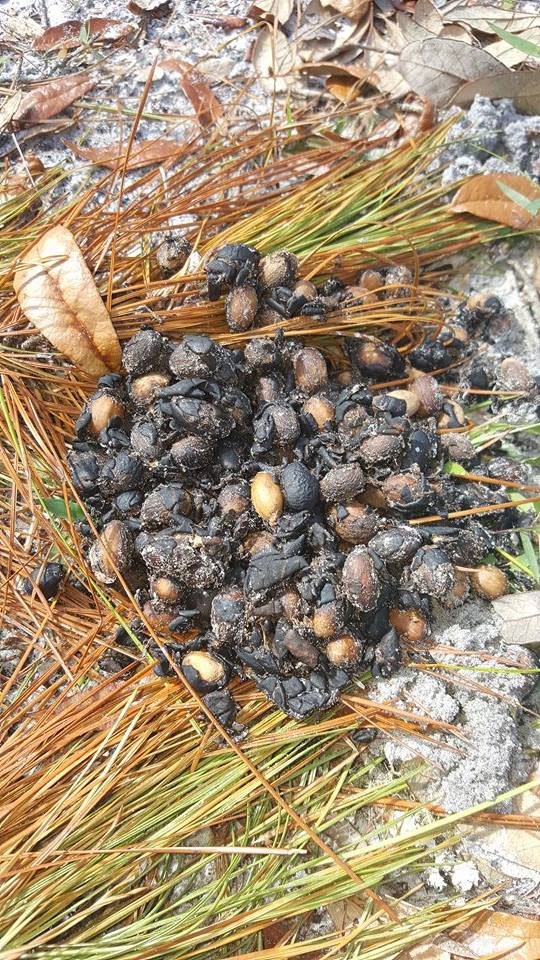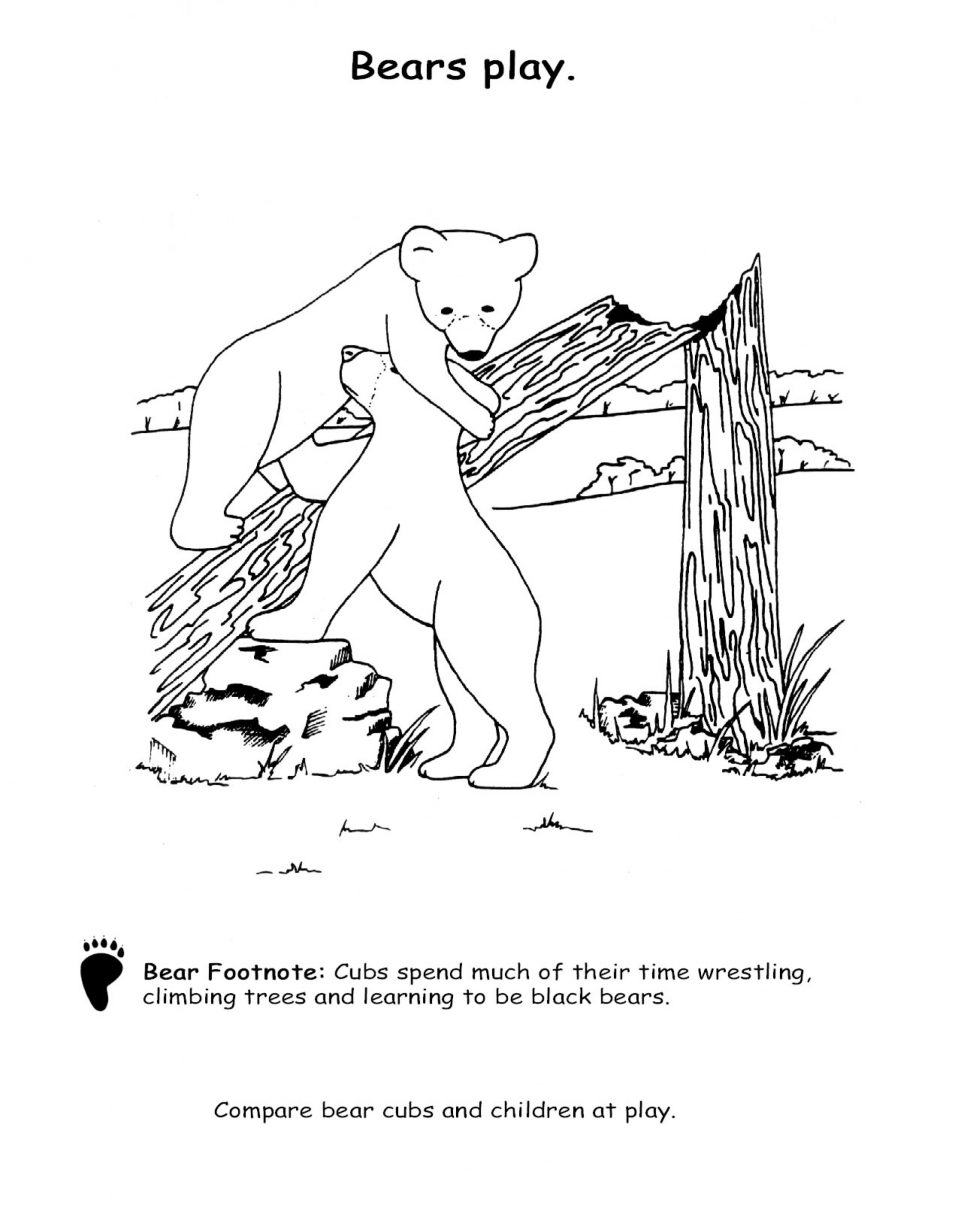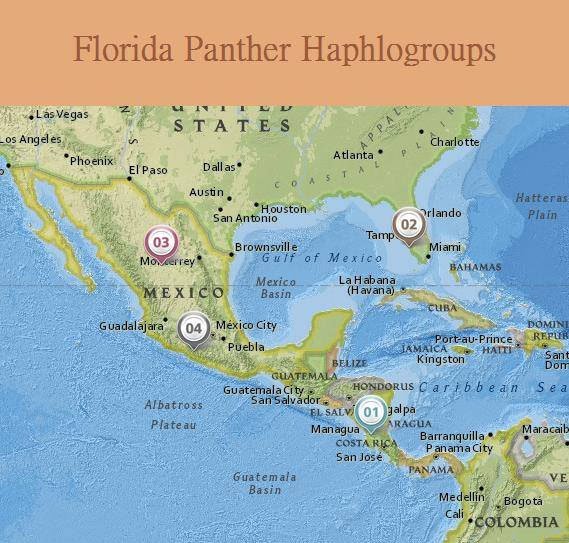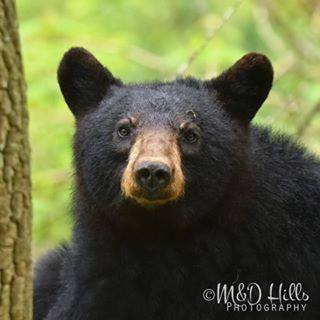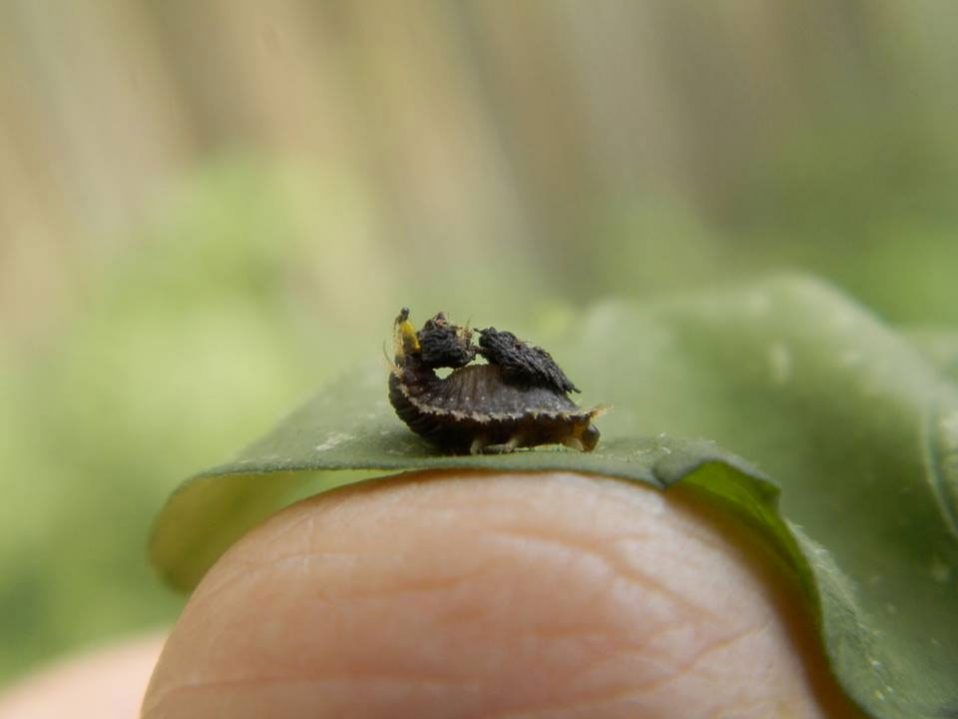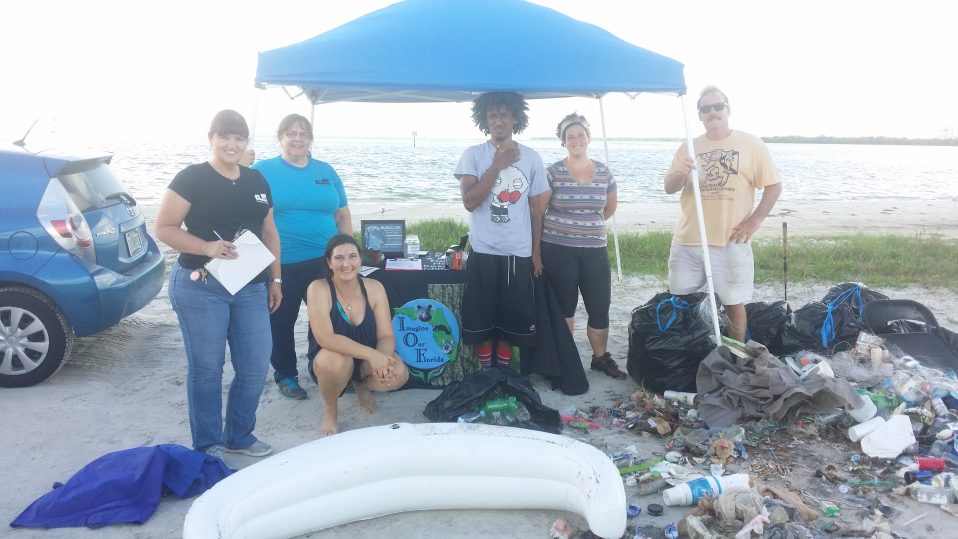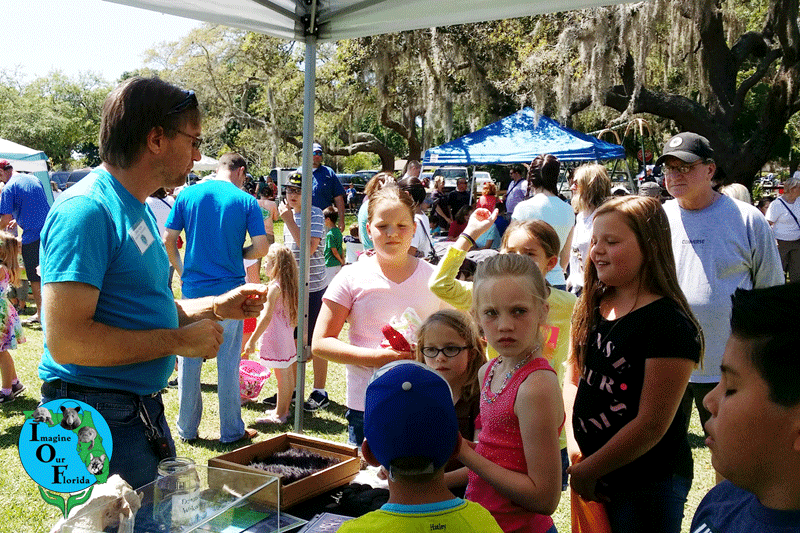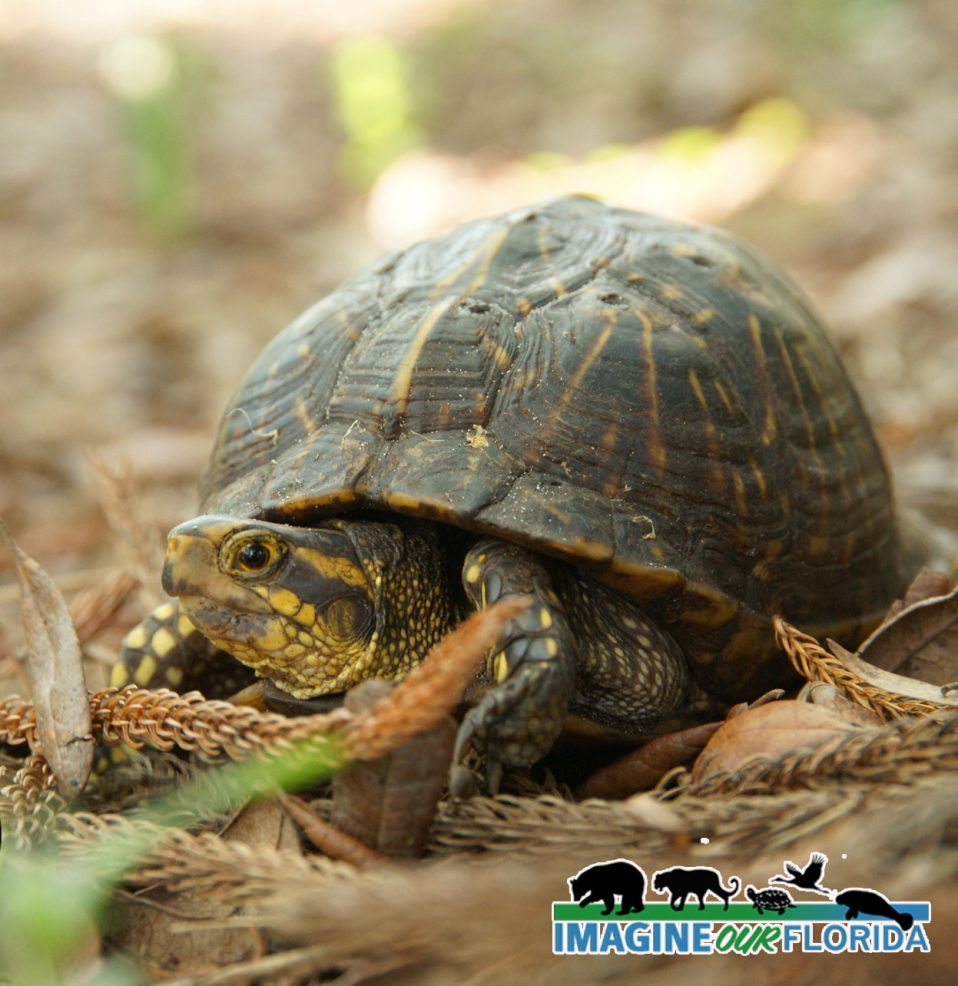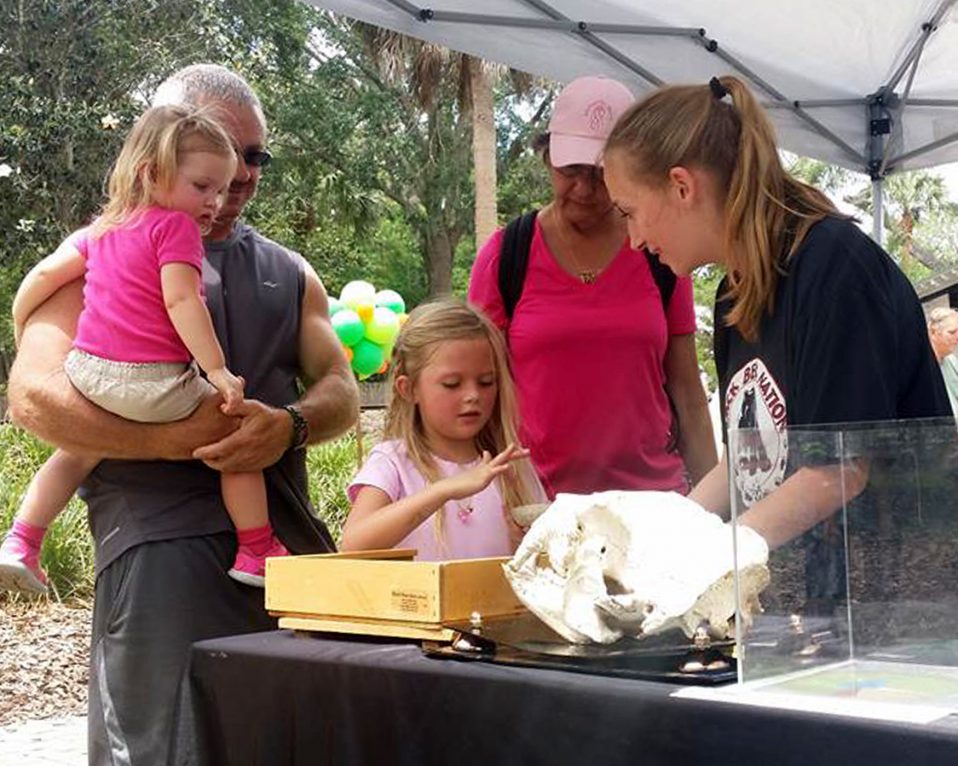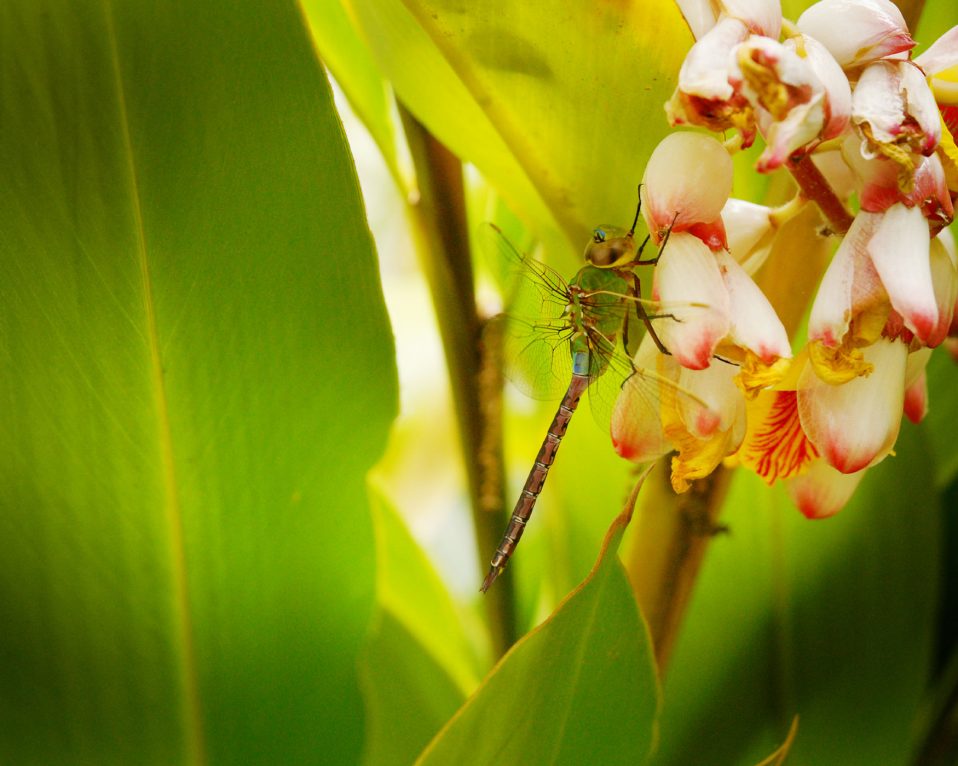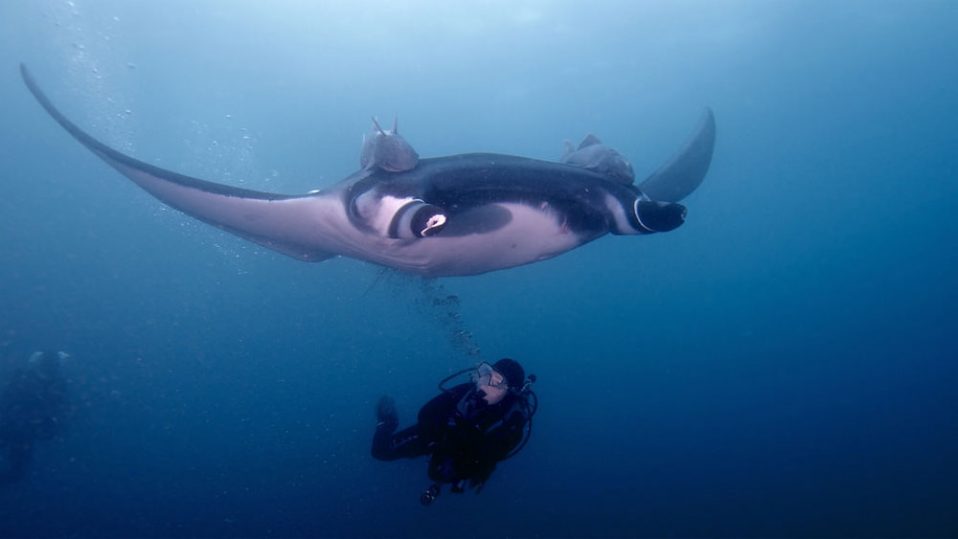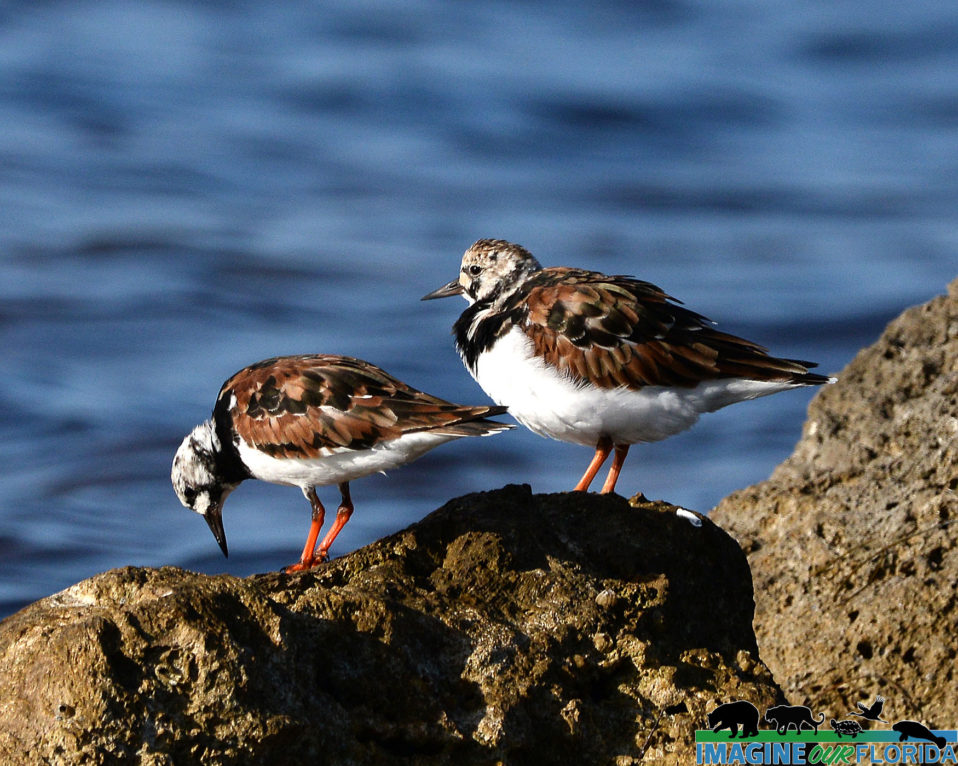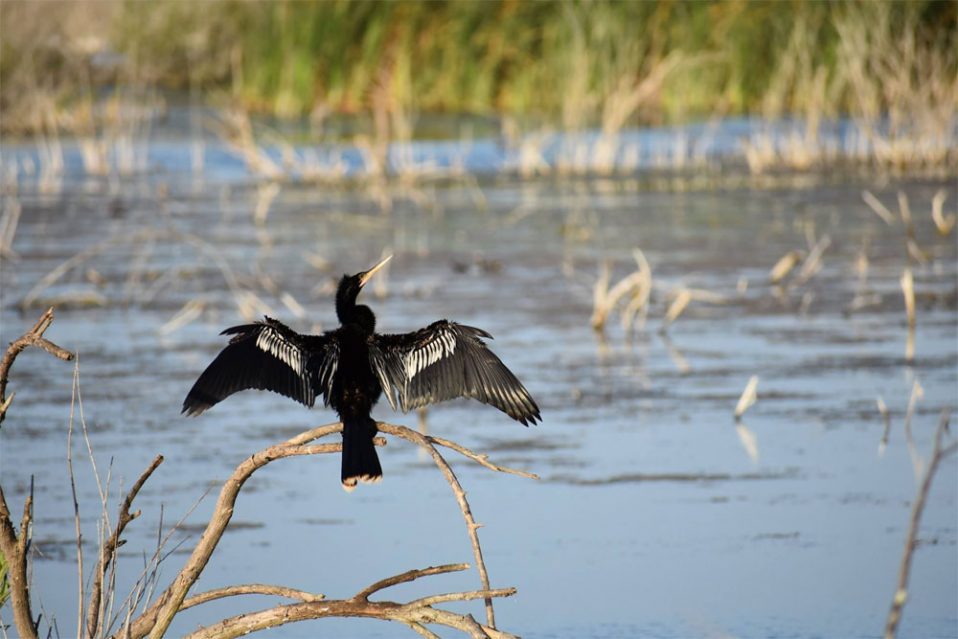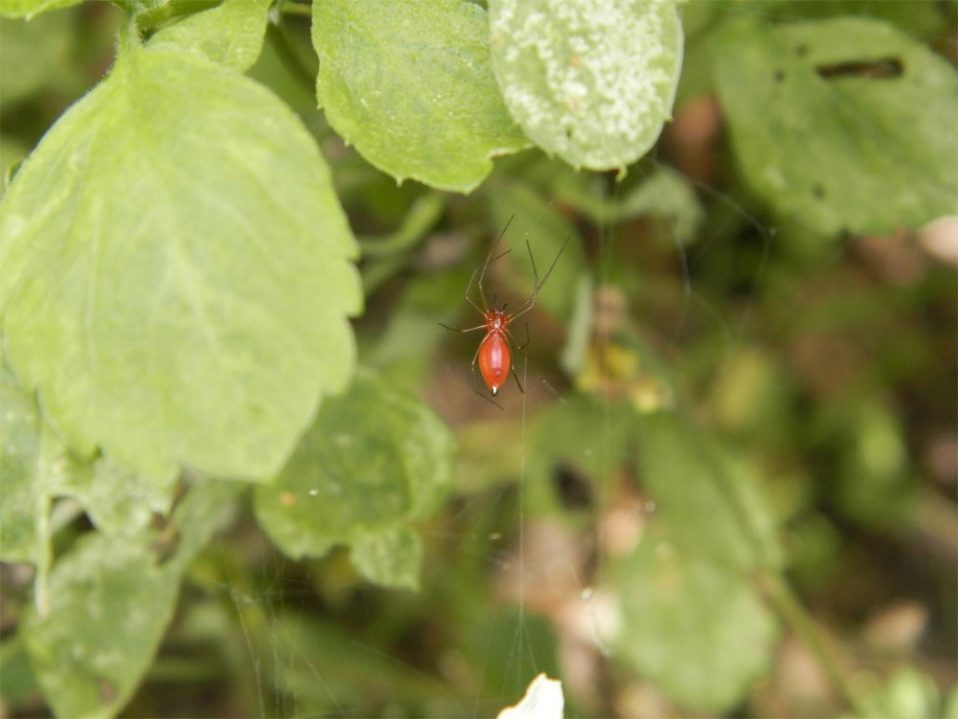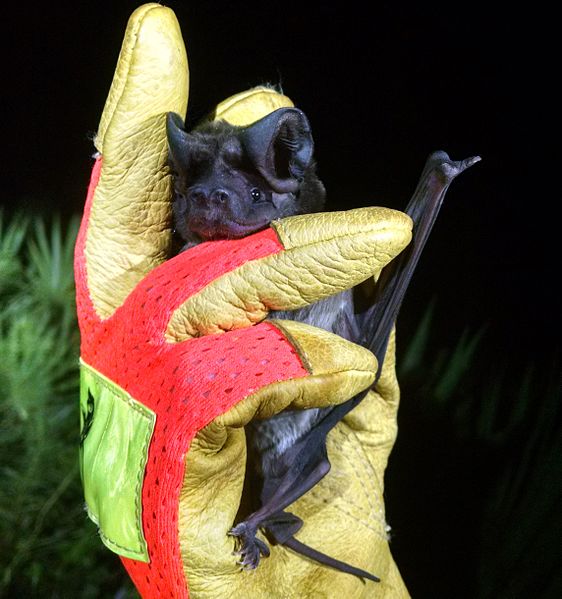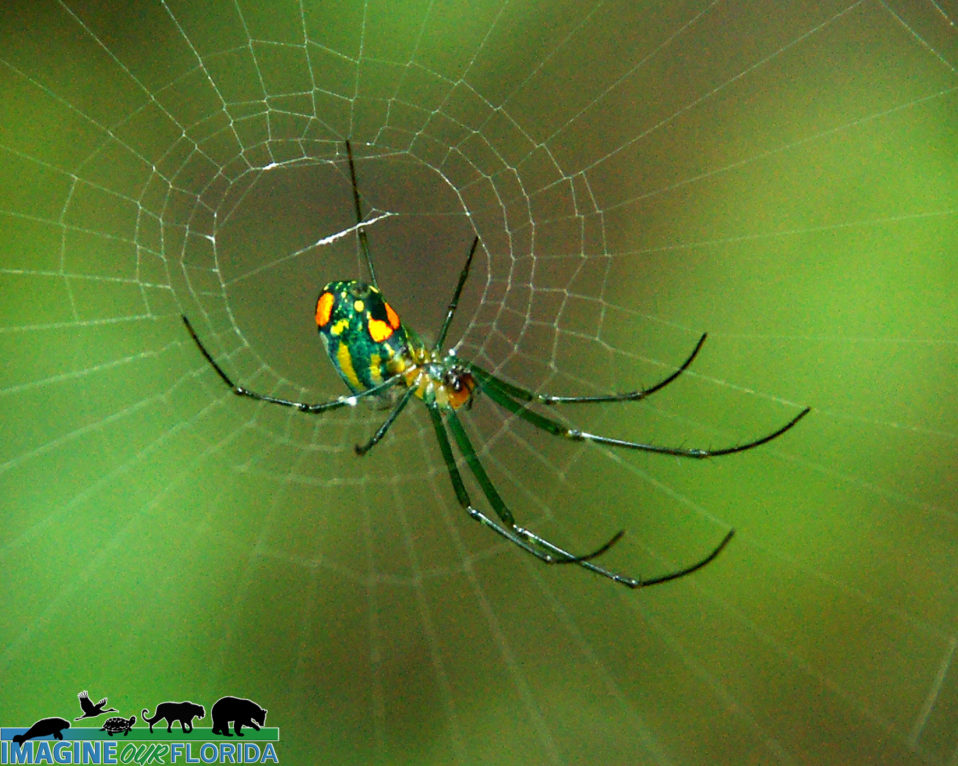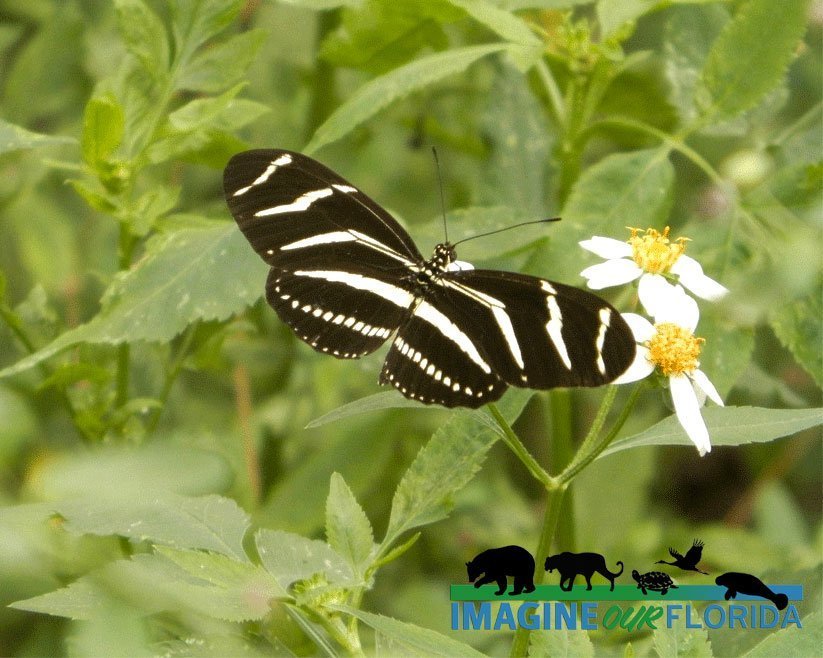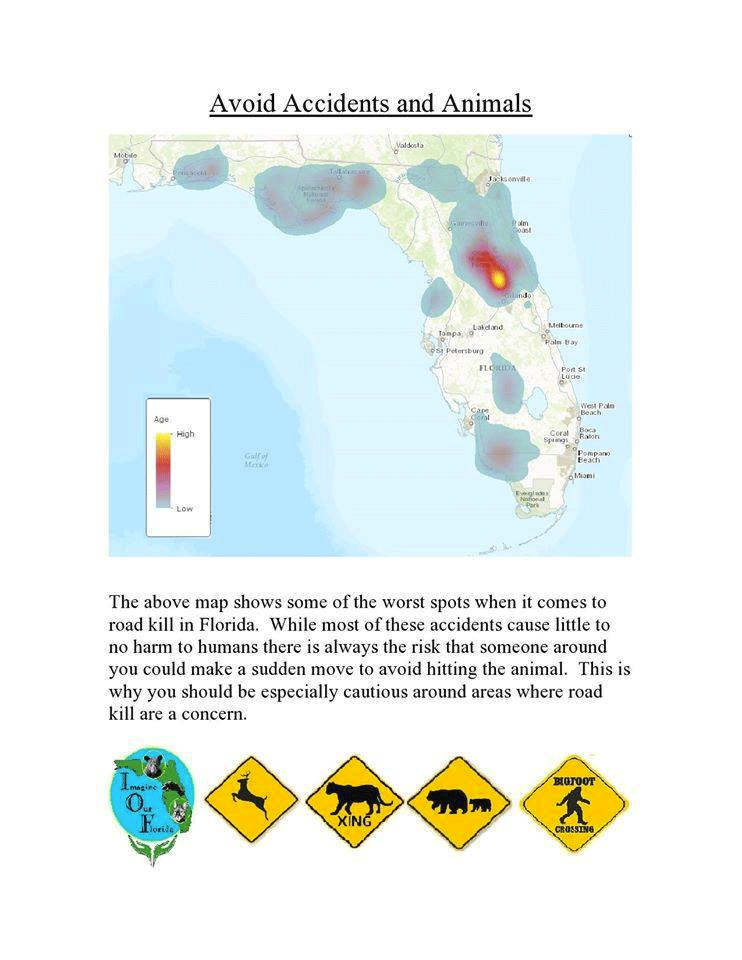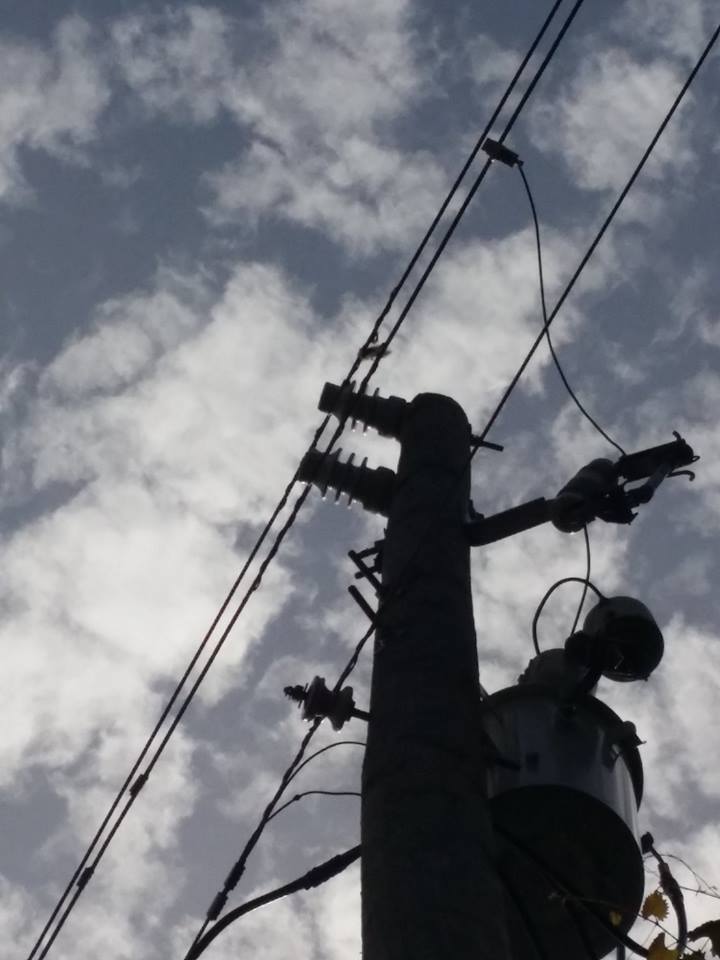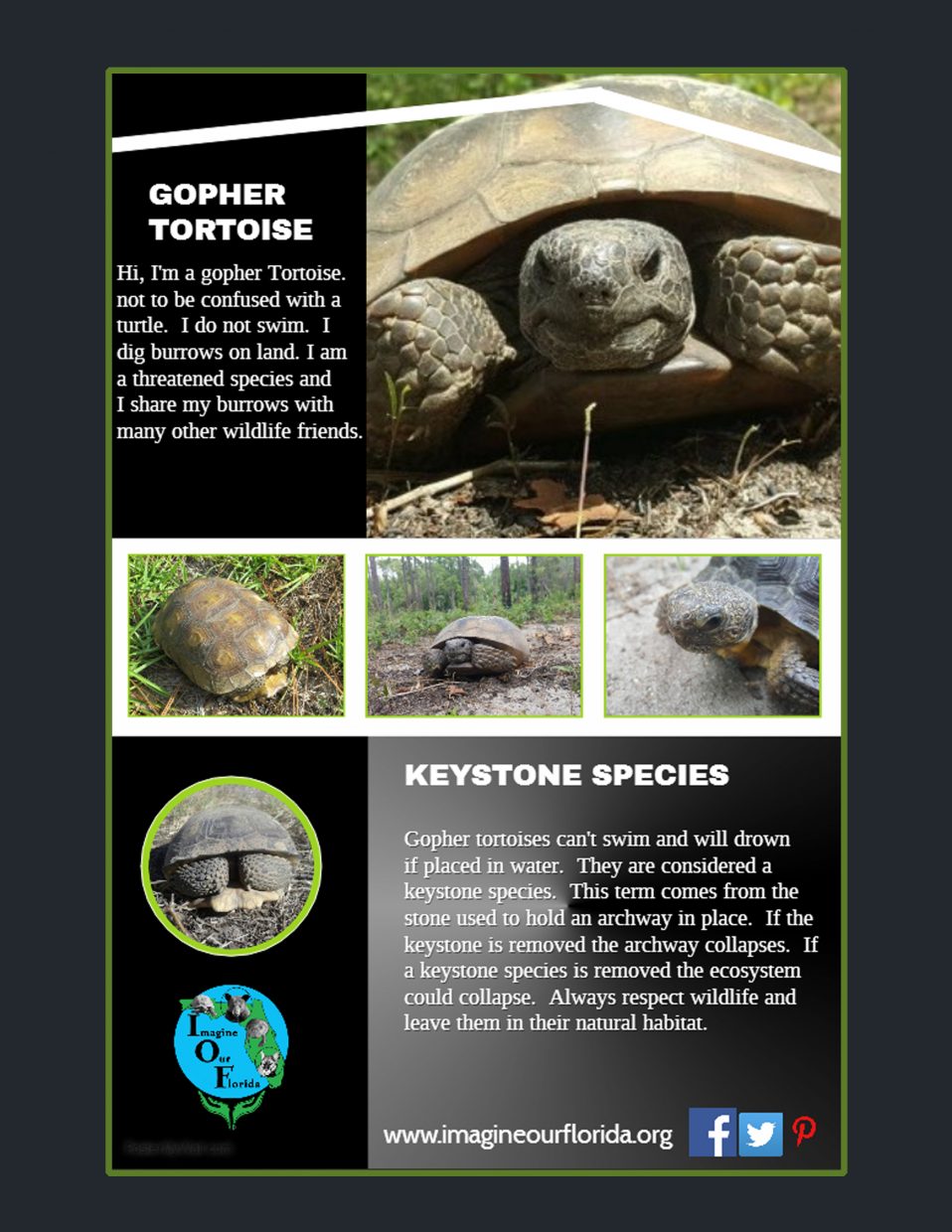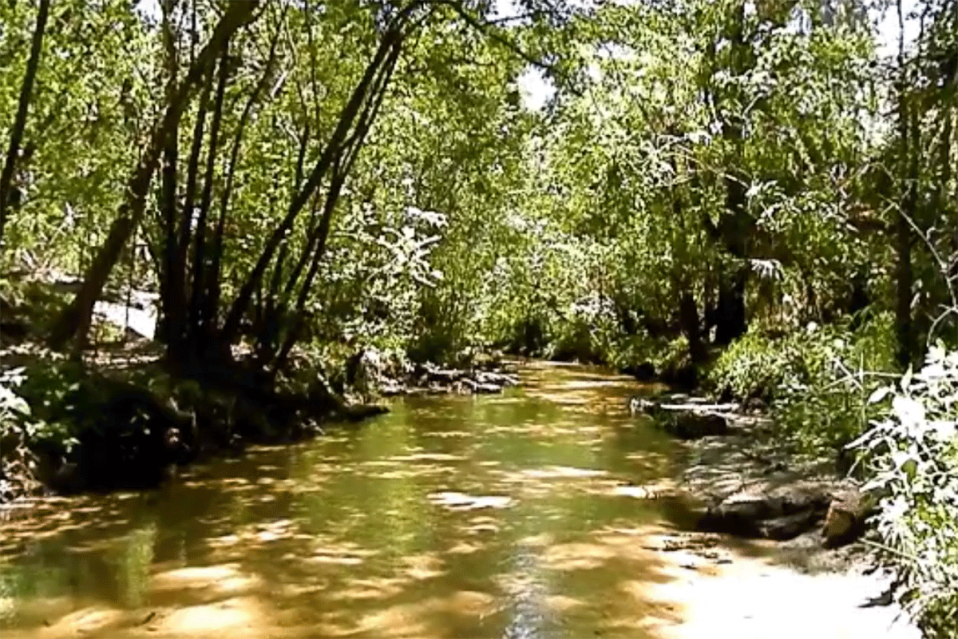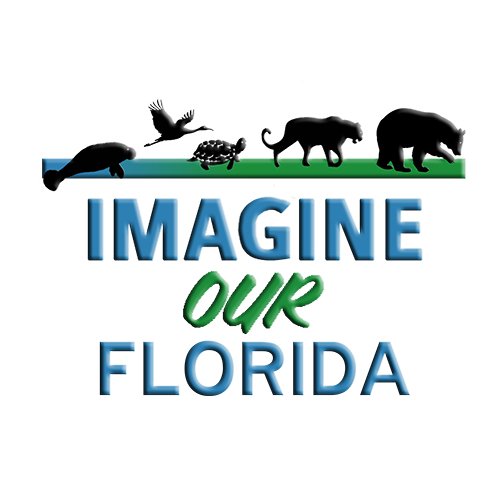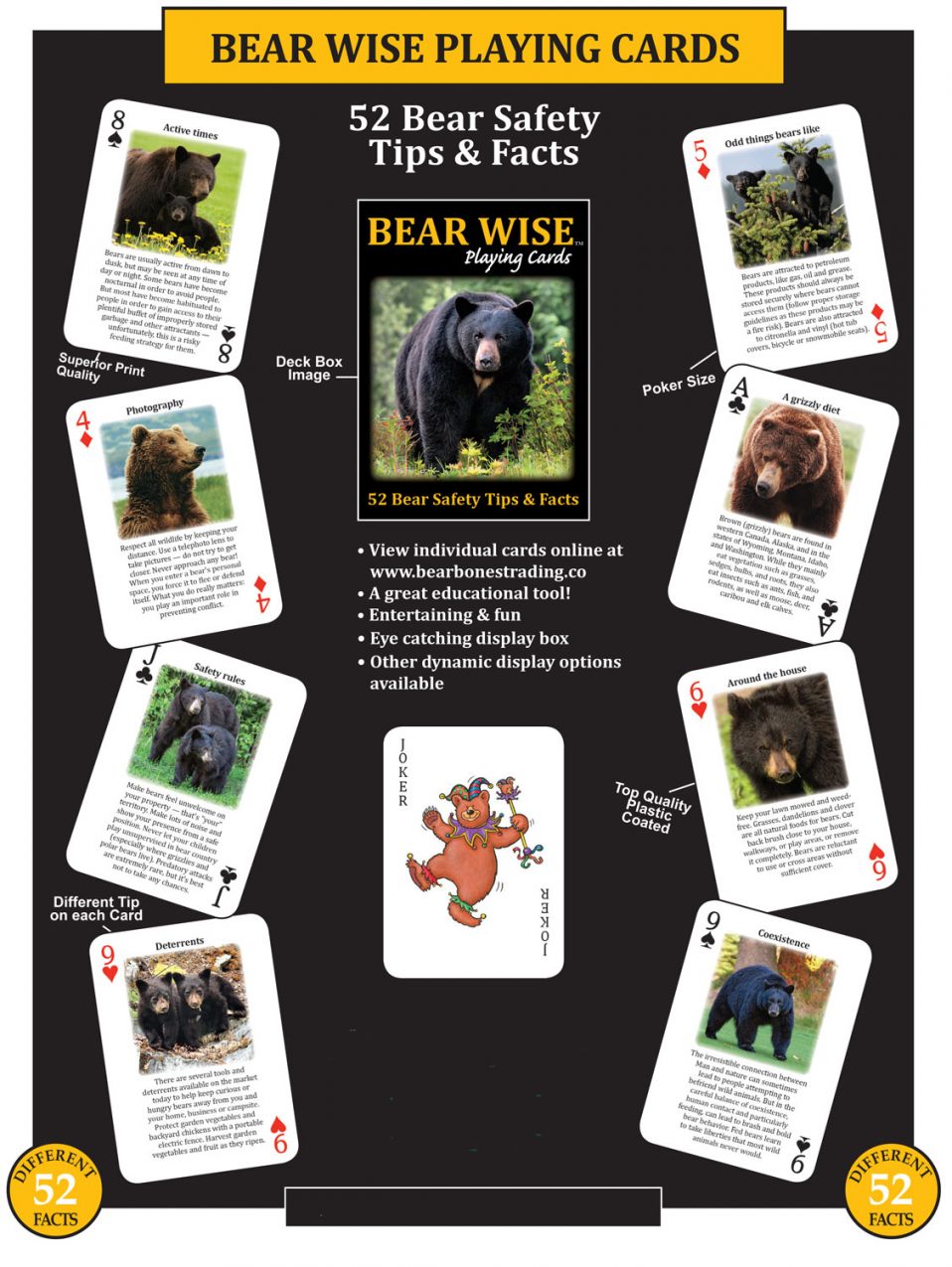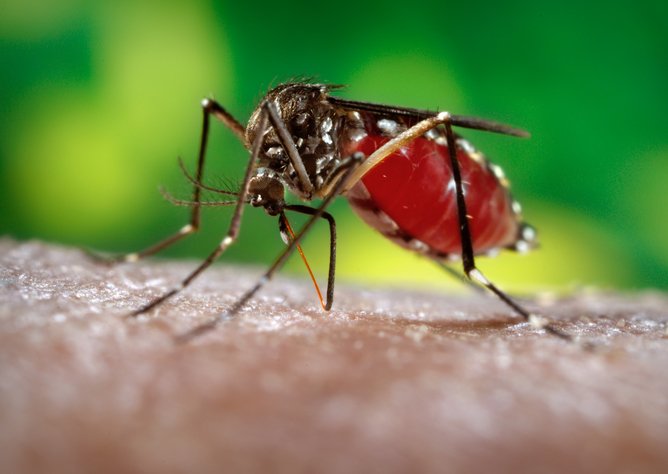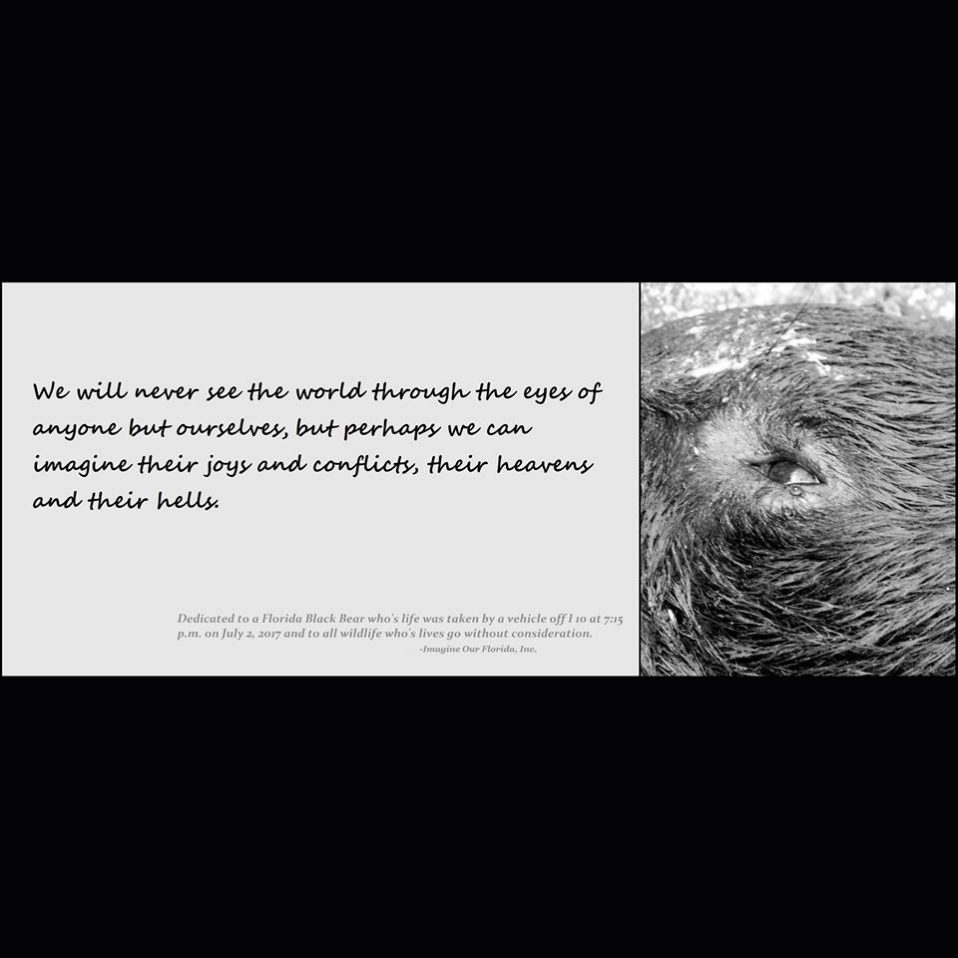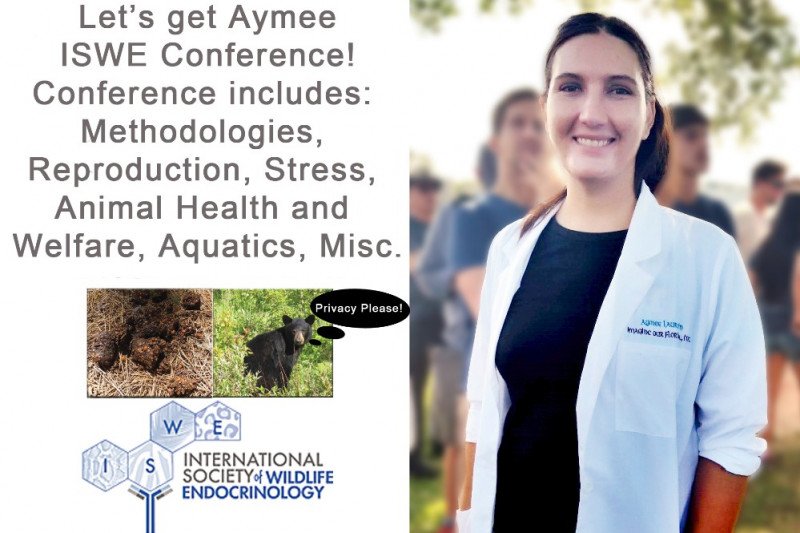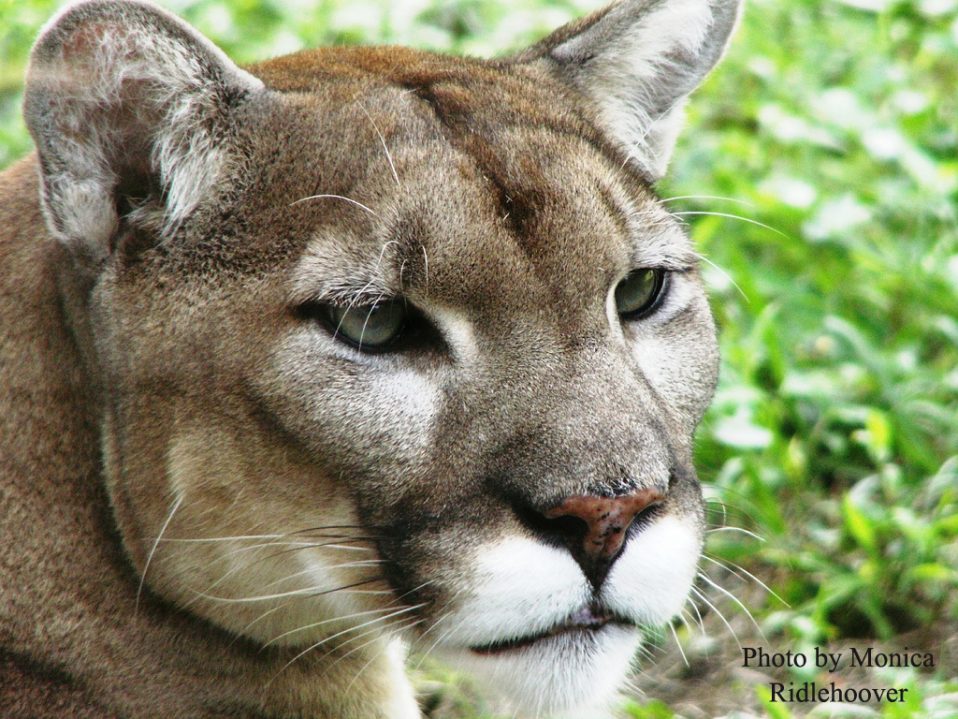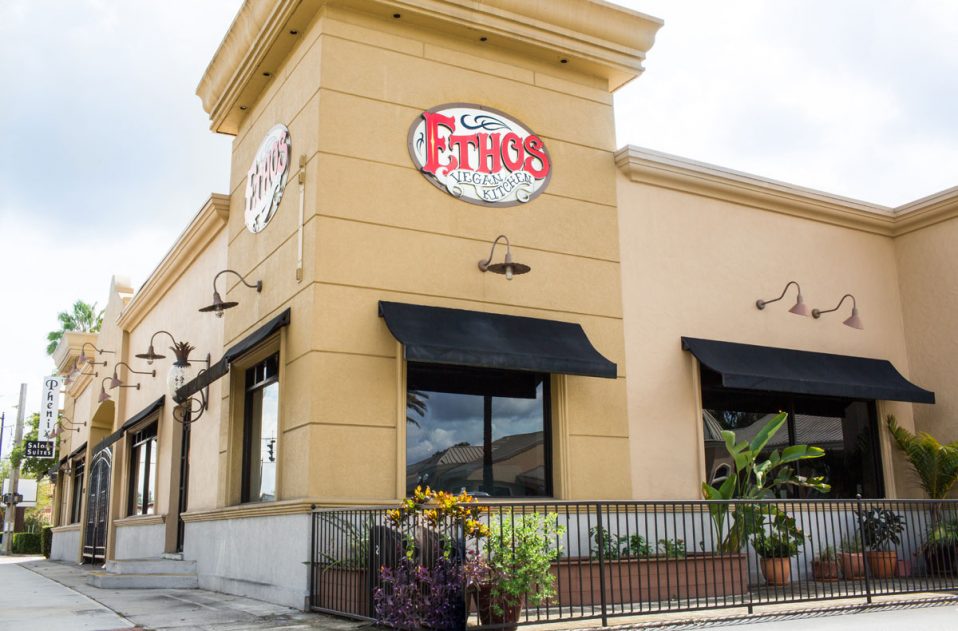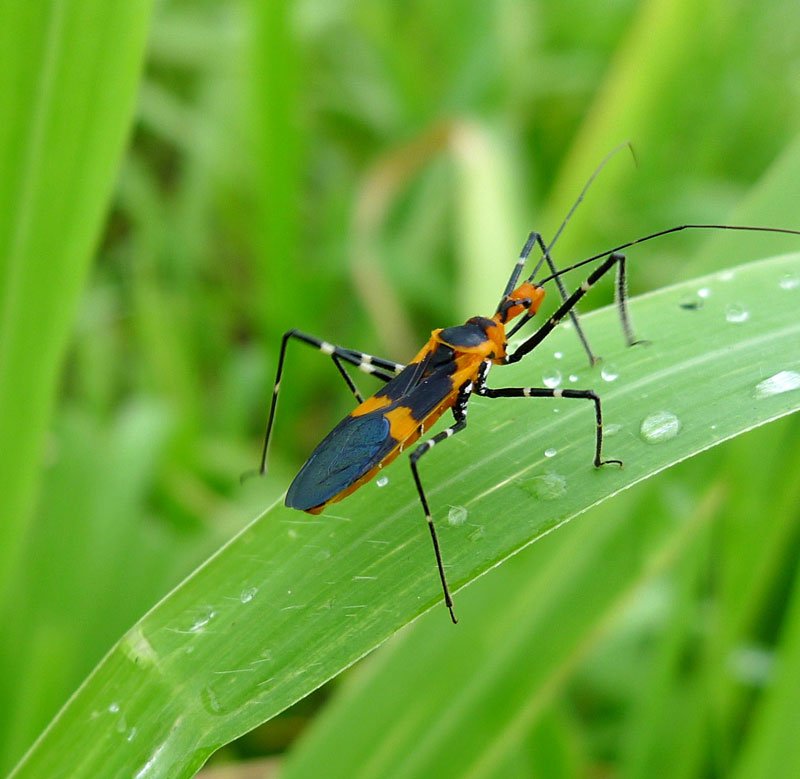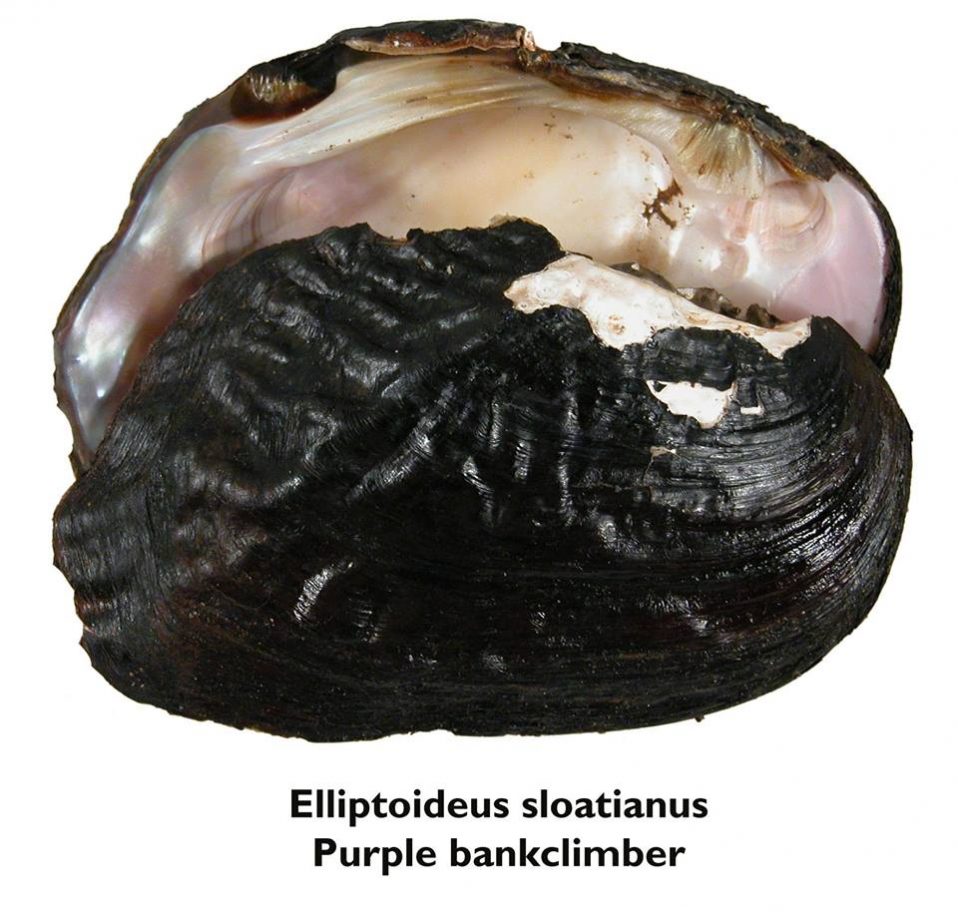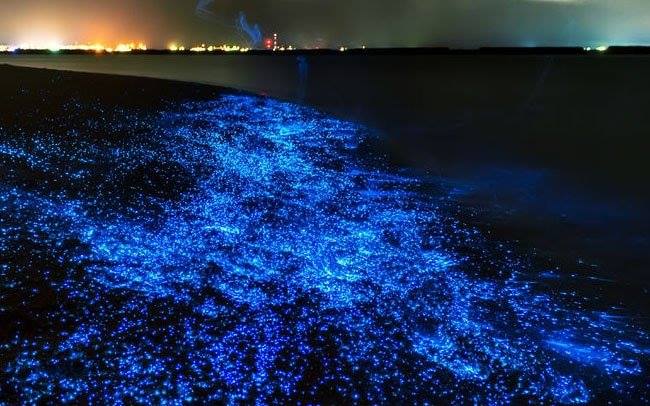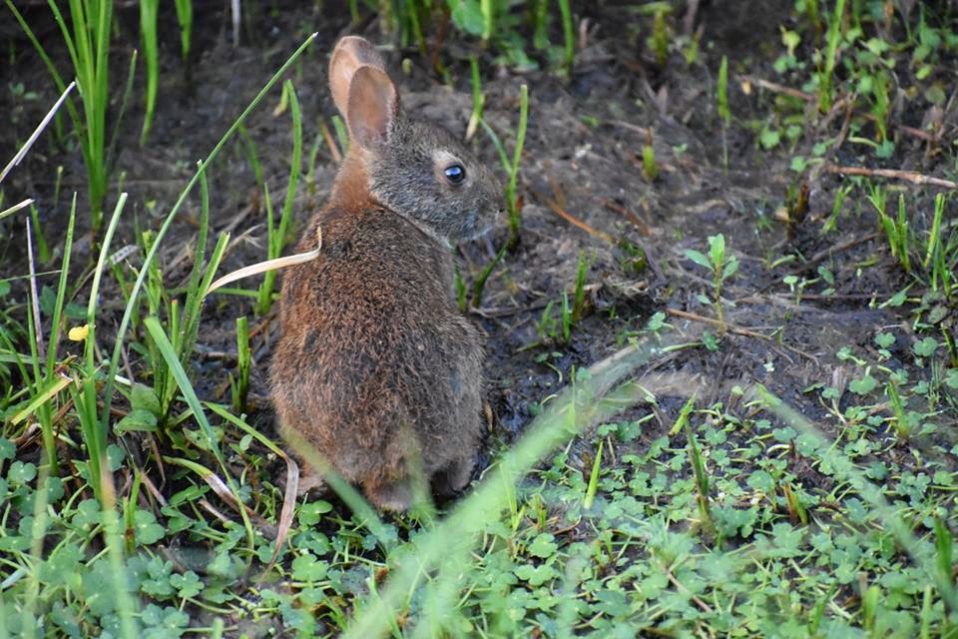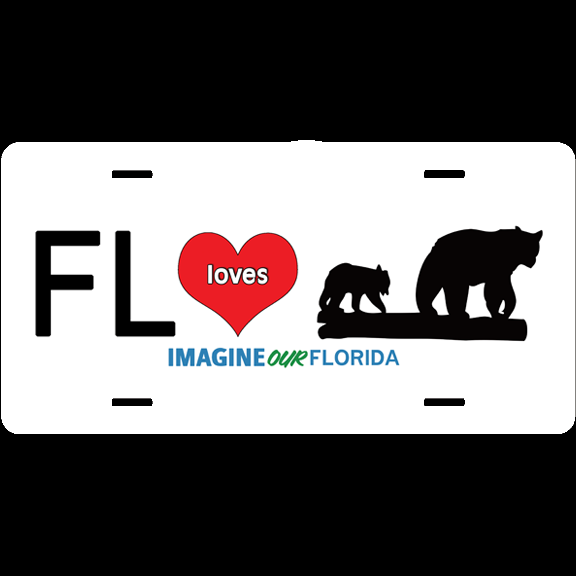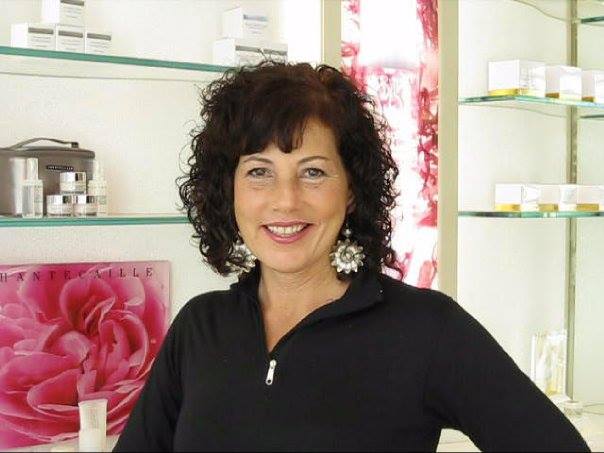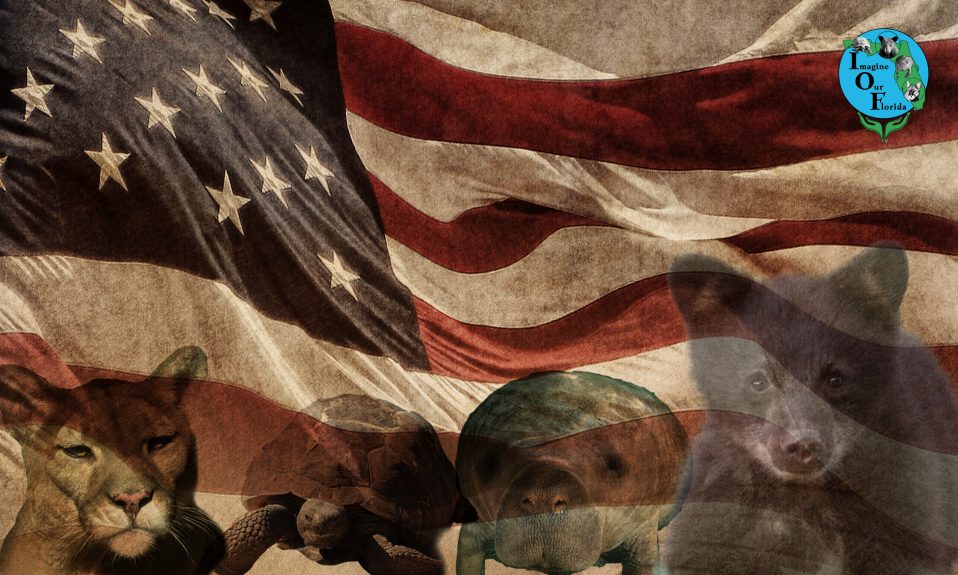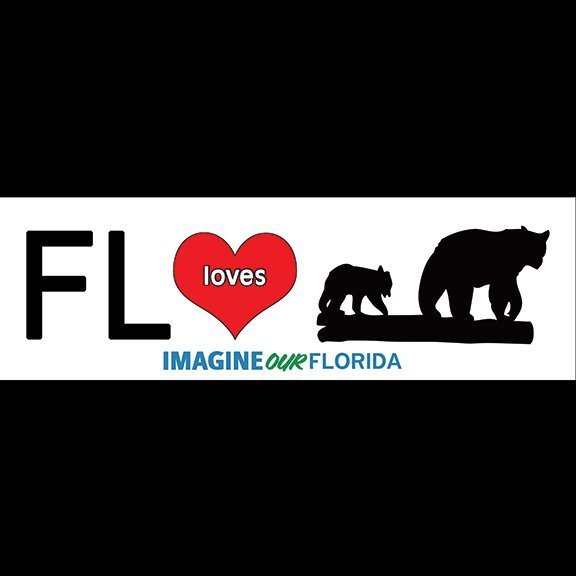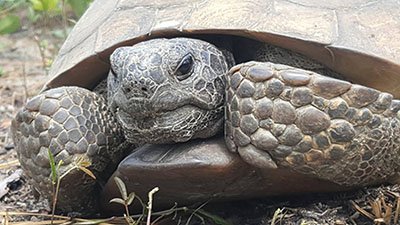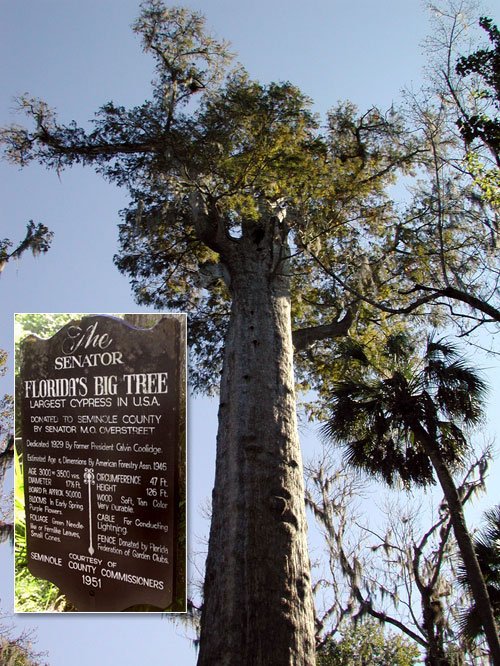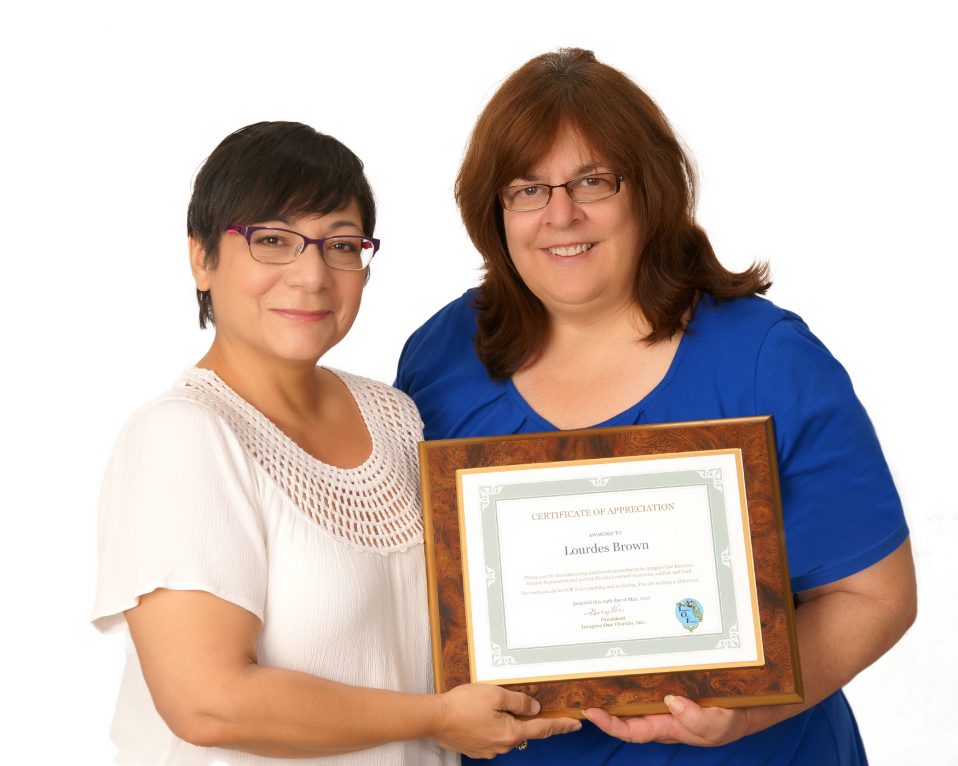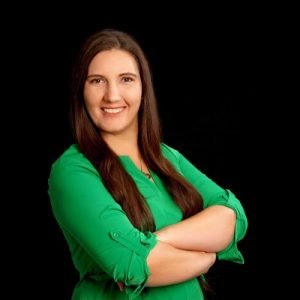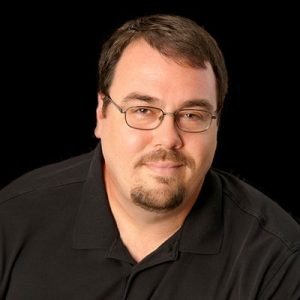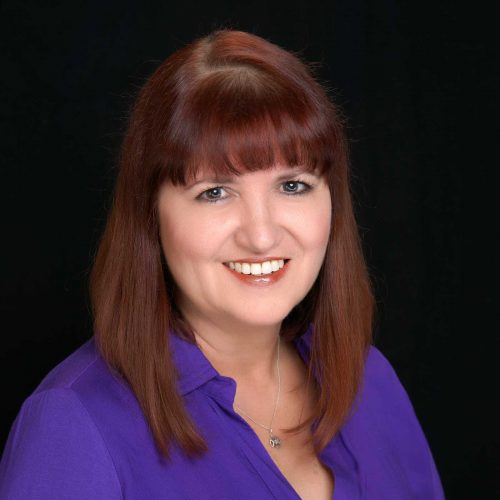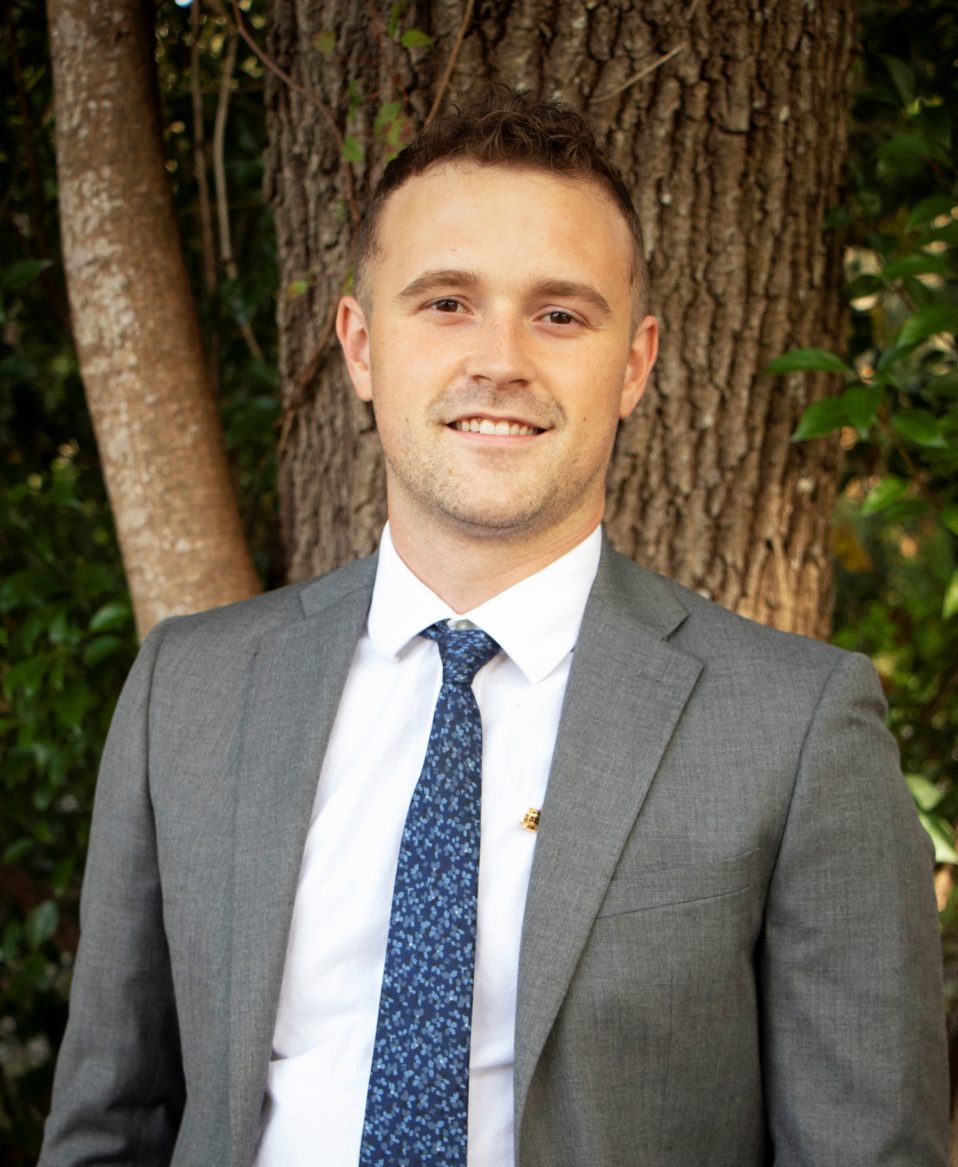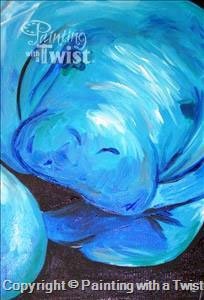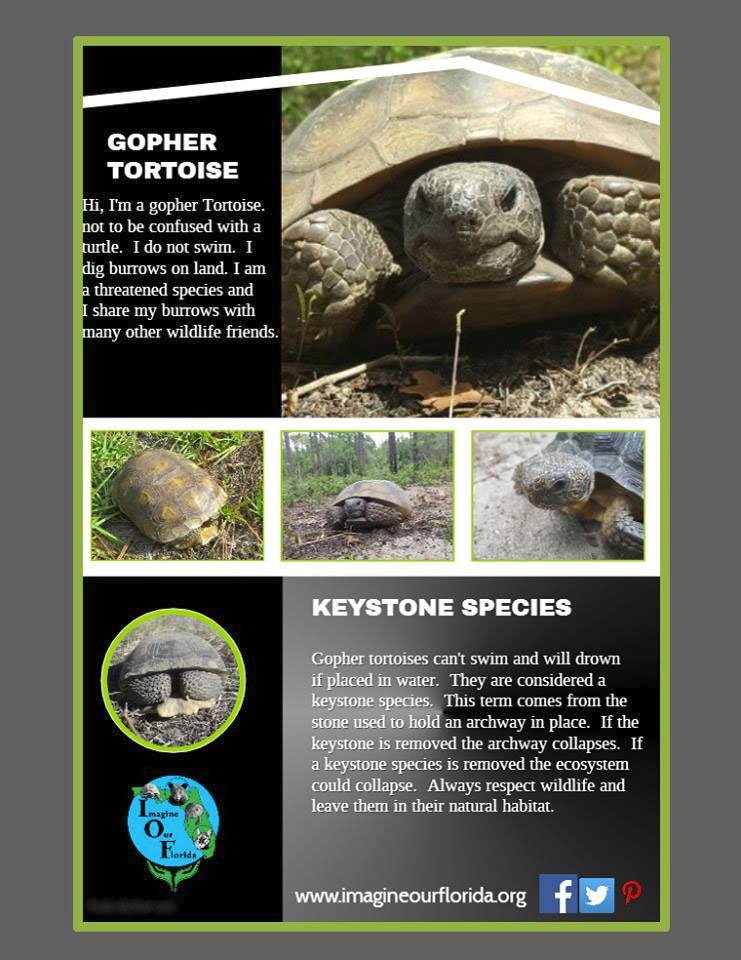Imagine Our Florida, Inc. believes humans are a part of the ecosystem and not above it. Our belief in the need for people to connect, respect, and coexist with our wildlife and within our
White Ibis (American)
The American White Ibis is a very common bird. You may have seen a group of them passing through your yard using their beak to probe for insects. The males tend to be larger with longer beaks. They breed along the Gulf Coast, and when not breeding, they drift further inland and to the Caribbean. These birds are monogamous, and both parents help to take care of the young. Aside from garbage, the larges threat to these birds is methylmercury that leaks into the environment. This alters the hormones in the birds and interferes with their reproduction and breeding. Methylmercury concentrations are increased when waste and fossil fuels are burned. Reservoir flooding can also cause an increase. This chemical is neurotoxic and also inhibits part of the endocrine system. It prevents males from producing sex hormones that would lead to courtship behaviors. Courtship behaviors are significant in most birds. Without these behaviors, the females will not find an interest in the males, and reproduction will not occur. It can also lead to females abandoning their nests and reduced foraging. Other threats include harvesting their food sources such as crayfish, hunting, habitat degradation, and other chemical uses. If you see these birds passing through, know that they will help your yard by removing pest insects. If you see smaller brown ibis, those are juveniles.
Palm Warbler
Florida has many migratory birds. This Palm Warbler (Setophaga palmarum) is one of them. The Palm Warbler is a fast little bird, and getting a picture can be quite a challenge. Luckily, this beauty allowed us to snap a shot before darting off. The Palm Warbler is a small and colorful songbird. However, they have larger tails and legs than most warblers. This beautiful species has a captivating color pattern that easily attracts the attention of any bird-lover. Palm Warblers breed throughout much of Canada’s boreal forests during the summer and migrate to the Southeastern U.S., Caribbean, and Central America for the winter. These songbirds are quite talented, and their songs can be heard throughout the day. This bird can constantly be seen wagging its tail. They are mostly ground feeders and will feed off berries, seeds, and insects, including aphids, mosquitoes, beetles, grasshoppers, and spiders. Planting native plants in your yard help provide these birds with lots of healthy food during their migration. Photo Credit: Dan Kon
Get Involved. Make a difference.❤ Educating, Empowering, Protecting
Ileana rocked IOF’s educational programs at the Love the Everglades Movement event in Miami while Nancy and Dan were answering great questions from our youth at the Debbie Turner’s Cancer Resource event in Central Florida. IOF has many events coming up. Volunteer a little of your time to show of people of all ages how to respect instead of fear our bears and their forest friends. Let Nancy, Aymee, Ileana, Andy or Dan know when you are available. A few minutes of education can last a lifetime and that outreach can save Florida’s natural resources, wildlife and land. Connect. Respect. and Coexist. #ImagineOurFlorida #bears #blackbears #environment #wildlife #LTEM
Congratulations Nancy Kon
Director Nancy Kon was recognized by AARP for her outstanding contributions to her community. Many people may not realize the hard work that goes on behind the scenes of an organization. On top of juggling work and home life, Nancy is always looking for ways to better her community. In 2015 Nancy collected signatures for Seminole County to request bear-proof trash cans to prevent bear-human interactions. She presented these to Commissioner Lee Constantine who championed the project. Seminole county became one of the most progressive counties when it came to getting bear-proof trash cans. Nancy also organized over 100 bear monitors for all the central and south Florida check stations during the Florida Bear Hunt. This involved the screening of many people capable of enduring the horrific activities that happened as hunters brought bears into the check stations to be counted. These volunteers ensured an accurate by the hour count so that notifications could be made to ensure the hunt did not exceed the quota. Thanks to these volunteers it didn’t. Unfortunately, that day resulted in some very traumatic experiences. Nancy spent hours consoling over 100 volunteers. She soon recognized that professional services would be needed and 3 counselors volunteered to be available to the monitors. As luck would have it she was able to befriend Dr. Illeana Sisson who passed away early this year and who volunteered her time to not only help those volunteers who needed it but also drove halfway across the state for a retreat. Nancy recognized the need for a community for these people and established Black Bear Nation. Many of those members are still close to this day. When Seminole County applied for grants for the trash cans Nancy and her husband, Dan, collaborated on a proposal and identified a strategy that would be most effective but would also make the most of the funding. It was sent to Commissioner Constantine and presented by Dan at the Seminole County meeting. Nancy has also been working patiently with Orange County Commissioner Bryan Nelson in their bear-proof trash can efforts. Furthermore, Nancy has been an eco-education leader by conducting numerous outreach efforts which teach people how to coexist with wildlife. These include teaching a girl scout troop, attending several Native American Pow Wows, tabling at a college, presenting our educational lesson plan at various community events, and collaborating with libraries on educational displays. She has attended several FWC meetings which involved an extensive amount of travel. She has also put in very tedious work including research, designing educational materials, coordinating the organization of multiple events, reaching out for volunteers, following up on projects, and even learning a bit of computer coding. This is just a snapshot of all the work she has done. Yet, she still remains positive, cheerful, and passionate about making her community and Florida full of better places for our wild spaces. Thank you Nancy for all that you do.
good idea to stay informed about new bills
It’s always a good idea to stay informed about new bills that impact or help our environment and wildlife in Florida. Be sure to voice your opinion. Find a Senate Bill, Committee, watch action on the floor: https://www.flsenate.gov/ https://www.flsenate.gov/Senators from our Affiliate – Florida Conservation Coalition:
Proposed Bill Would Hurt Florida Panthers, Scrub Jays, Florida Bonnet-head Bats, and more
S.1863 Is a federal bill that would exempt endangered species found in only one state from being protected at a federal level. Florida has a vast amount of endangered and endemic species who could be hurt by this bill. If you would like to voice your opposition to this bill you can contact Senators Nelson and Rubio. Letting your representatives know what is important to you is one of the move more effective ways to create positive change. Find Your Senator: https://www.senate.gov/senators/contact/ #Florida #wildlife #ESA #s1863 #scrubjay #bonnetheadbat #floridapanther https://www.congress.gov/…/115th-con…/senate-bill/1863/text…
Saving Florida’s Gopher Tortoises one at a time
On August 7th, Andy and Rowan joined Carissa Kent and Dave to help remove the gopher tortoises from a half acre property that was cleared on August 8th. Carissa is the Director of Saving Florida’s Gopher Tortoises. Her group is the only group in the state that focuses only on recovering tortoises that exist on properties with Incidental Take Permits. ITP’s were issued between 1991 and 2007 prior to the gopher tortoise being uplisted to threatened in 2007. These permits have no expiration date. What does this mean for the tortoise? Any developer that has an ITP can legally entomb tortoises while developing the properties. They are under no legal obligation to relocate the tortoises. That means, these are “dead tortoises”. There are thousands of these Incidental Take Permits that cover an estimated 10,000 to 25,000 tortoises. These tortoises are legally allowed to be killed, UNLESS Carissa and her team come in to save them. Carissa and her team of volunteers have worked to save over 6,000 of these “dead tortoises” from a fate of being entombed under concrete, where it can take up to a year for a tortoise to slowly die. Moving these tortoises is no easy feat. It requires back breaking, hot, tiring work. It is all done by donations. The developers do not have to pay for this, but many do give donations to Carissa’s group. She has workd for several years to foster a good, working relationship to save the lives of these tortoises. If you know of developments happening in gopher tortoise habitat, or if you have concerns about tortoises, you can contact : Carissa Kent Director, Saving Florida’s Gopher Tortoises (407) 529-5006 CKtortoiserescue@gmail.com She asks that you either email or text. She is often in areas that get very poor signal and text messages come through often better than a phone call.
Make YOUR VOICE Heard
On May 17, 2017, Imagine Our Florida Director Aymee Laurain spoke at the Tampa Constitutional Revision Commission meeting regarding the importance of protecting biodiversity. In keeping with IOF’s commitment to protecting biodiversity, two proposals have been submitted to the Commission which if adopted, will aid in achieving a more balanced ecosystem through policy. We appreciate the wise counsel from IOF’s Advisory Board Member Richard Foster of the Daily Kumquat for his constructive criticism, patience, and insight in helping us write these proposals. Read these two proposals at the following links. Please send your comments to the commission about any proposal by clicking on the “home” tab in red at the top of the page and then clicking on the “Submit a Comment or Idea” in yellow to the right of the page. Protection of Sovereign Lands https://www.flcrc.gov/Proposals/Public/700491 Protection and Preservation of Biodiversity https://www.flcrc.gov/Proposals/Public/700502 Watch Aymee’s speech at this link https://www.facebook.com/imagineourflorida/videos/1856661761252341/ #Florida #Biodiversity #Wildlife #PublicLand #Tampa #ImagineOurFlorida#FLConstitution
Imagine Our Florida Inc. is excited to announce
Imagine Our Florida Inc. is excited to announce that Catalina Uruena Grajales has joined the Advisory Board. Catalina’s experience and education, as well as her knowledge of and commitment to our natural world, are valuable assets to IOF as the organization continues to grow and advance its mission. Welcome Catalina! We look forward to your sage advice as together, we work on behalf of our natural resources wildlife and land and show folks throughout our state how to Connect. Respect. Coexist. https://imagineourflorida.org/team/catalina-uruena-grajales/
Marine Plastic
A study published this year looks at the impact of plastic contaminants in the marine environment. The diagram shows how plastic is transported from the shore to the ocean surface, water column or organism, and breaks down into small particles that settle on the ocean floor and incorporate with ocean sediment. Trawls are able to collect these plastics and measure their mass and abundance in other areas. As you can see from the map, Florida is in the upper middle level of abundance and the middle level when it comes to mass. What this means is that Florida has much room for improvement. As the article states, “The ultimate solution to environmental plastic pollution is to prevent contamination in the first place, first and foremost by a reduction in use, followed by capture and reuse, recycling, and energy recovery (Koelmans et al. 2014b), which will hopefully result in less new plastic being produced and progress toward a more circular and sustainable economy.” For this reason Imagine Our Florida, Inc. is proud to be partners with Keep Pinellas Beautiful and will be hosting our next beach clean-up at North Gandy Beach on October 14, 2017. Details are in the event section. We hope to see you there. Source: http://www.annualreviews.org/…/annurev-marine-010816-060409…
How to Report Marine Debris
You can report marine debris to the Florida Department of Environmental Protection Southeast Florida Action Network at the following link. It just takes a moment and can save the lives of many of our wildlife friends and keep our environment safe and clean. http://www.surveygizmo.com/…/SEAFAN-Report-Form-BR-BR-Updat…
Ocala National Forest: Learning from the Past
This video paints a bright and hopeful future for the Ocala National Forest. Little did they know way back then that much of the work being done would cause negative effects on our precious Florida wildlands. Longleaf pine ecosystems were diminished. Some species, including our Florida Black Bears, were hunted to near extinction. Timber harvests degraded much habitat for wildlife and improper planting resulted in erosion that lead to poor water flow. It’s important to learn from the past and not make the same mistakes over and over again. That includes development around dangerous flood zones, managing wildlife populations for the purpose of creating hunting opportunities rather than a balanced ecosystem, and focusing on preserving native plants in the proper environments which they adapted to. #ocala #florida #floridahistory https://www.youtube.com/watch?v=BaO38lzHPlI
Coral Bleaching Reduces Florida Defenses
“Now, scientists say these losses may have weakened the reef’s storm buffer.” https://www.washingtonpost.com/…/how-floridas-damaged-cor…/…
Be Their Voice – Hunting Rules
FWC is asking for “Human Input” on proposed hunting changes. Noone is asking the animals for their input. Hunters make up a small percentage of Florida’s population. We believe a larger percentage of Floridians embrace the concept of Respect. Connect. Coexist. This is your chance to express your opinion and speak on behalf of our beloved Florida Wildlife. Take the survey here: https://www.surveymonkey.com/r/FWC-Proposed-Rule-Changes-20…
Travel Back in Time at De Soto National Park
De Soto National Park offers historical reinactments of Hernando De Soto’s invasion and quest for wealth throughout Florida. You can take a guided Kayak tour and learn about the ecology of Florida. Annual events also include the Luminary Walks, Family night on the lawn, the De Soto Landing, and Desoween celebration. You can see many times of birds including raptors. Racoons, turtles, butterflies, snakes, and green and spiny tailed iguanas can also be found along with many other animals. Start planning your families adventures now. The best vacations are the ones where you learn something. https://www.nps.gov/deso/planyourvisit/basicinfo.htm
Why aren’t Municipal areas Securing Garbage from Florida Black Bears?
In a study published in June of 2017 various local government officials and waste management were interveiwed to determine why these measures were not being implimented in their districts. Costs were a major obstacle but also noted was lack of support for bear proof trash cans. However, the study identified that was overstated based on measures from four counties who adopted ordinances. Residents were starting to take appropriate steps. Perhaps it’s time local governments do their part. If you would like to contact your local government about getting bear proof trash cans or getting an ordinance in place check out our tips on how to advocate. https://imagineourflorida.org/advocacy/ Source: Noel, E. T., & Pienaar, E. F. (2017). Securing Garbage from Florida Black Bears: Why are the Appropriate Measures Not Implemented at the Municipal Level? Human Dimensions of Wildlife, 22(4), 347-361. doi:10.1080/10871209.2017.1334162
Artificial Reef Coming to Bay County
This is great news for ecosystems. Many reefs have been destroyed over the years but these artificial reefs have proven to be valuable in many areas around the state. They help promote growth around the reef where communities develop. They also act as a buffer to protect land from storm waves. #coralreefs #baycounty #florida http://www.wjhg.com/…/Artificial-reefs-coming-to-Bay-County…
Our First Poop Samples
Director Aymee Laurain received our first samples of bear poop for fecal glucocorticoid testing. One of the first parts of this research is to get a known female and male so we can determine differences between stress hormones in male and female bears in the wild. We also need to know how the stress hormones degrade in the hot and rainy Florida climate. This groundwork is very important to make sure our studies are accurate. We plan to use this non-invasive and non-leathal research to determine the stress caused by anthropogenic (man-made) activity. We look forward to giving more updates in the future. In the meantime if you would like to help fund our research we would be most appreciative. #Buschwildlifesanctuary#ImagineOurFlorida #bearpoop #blackbear #Florida #floridawildlife #florida #floridablackbear #fecalglucocorticoids #science #research #biology#ecologyirector Aymee Laurain received our first samples of bear poop for fecal glucocorticoid testing. One of the first parts of this research is to get a known female and male so we can determine differences between stress hormones in male and female bears in the wild. We also need to know how the stress hormones degrade in the hot and rainy Florida climate. This groundwork is very important to make sure our studies are accurate. We plan to use this non-invasive and non-leathal research to determine the stress caused by anthropogenic (man-made) activity. We look forward to giving more updates in the future. In the meantime if you would like to help fund our research we would be most appreciative. #Buschwildlifesanctuary #ImagineOurFlorida #bearpoop #blackbear #Florida #floridawildlife #florida #floridablackbear #fecalglucocorticoids #science #research #biology #ecology
Time to Color
Imagine Our Florida has many coloring pages for kids on our website. Print one out for your kids and let them connect with nature in a creative and artistic way. Our pick for today is below. For more coloring pages check out our website. https://imagineourflorida.org/animal-coloring-pages/ https://i1.wp.com/…/wp-cont…/uploads/2016/09/ColorFun-4.jpg…
Transpiration
Nature really does have it all under control. #Nature https://www.facebook.com/worldeconomicforum/videos/10154697657866479/
Effects of Atrazine Skewing Sex Ratios in Frogs
Dr. Tyrone Hayes spoke at the International Society for Wildlife Endocrinology Conference last month. This video gives a brief explanation of what the chemical Atrazine is doing to wildlife. “California uses more pesticides than any other state. The second is Florida” , states Dr. Hayes. As an indicator species frogs can give us early warning signs that something isn’t right in the environment. Atrazine has recently come up for review. The EPA received 106,737 public comments regarding concerns for the chemical. Of course this doesn’t just effect frogs. It can effect humans and even the development of the embryo. Watch the video and learn more. #Atrazine #frogs #drhayes #weirdscience #florida https://www.youtube.com/watch?v=uHqKfixPmps
Haphlogroups of the Florida Panther
In a recent study biologists were able to distinguish five haphlogroups of the Florida Panther. A haphlogroup show an evolutionary link that traces mitochondrial DNA. It’s like following footsteps to find where a species came from. Mitochondrial DNA is the DNA found inside the mitochondria of cells. It’s passed down from the mother of an organism. The origins of the haphlogroups are show in this map. PCO1 originated from the Costa Rica and Panama region. It’s suspected this was a transplant prior to 1995. PCO2 is native to Florida. PCO3 and 4 originated from Texas approximately 44,000 years ago. The fifth, PCO5, is still being determined. So, what does this mean? Some say that it means the Florida Panther is no longer a Florida Panther. In the case of haphlogroups that isn’t exactly how it works. haphlogroups trace an extremely long lineage. This means that even before Texas cougars were introduced the lineage still existed. Surely if someone of Asian descent had a child with someone of African decent it doesn’t erase one lineage or the other. It simply adds more of a variety of genes to the pool. This increased gene pool is what the Florida Panther needs for the species to survive. This survival is important for the health of the overall ecosystem. #Floridapanther #puma #phylogeny #haphlogroups #florida Source: Alexander Ochoa, David P. Onorato, Robert R. Fitak, Melody E. Roelke-Parker, Melanie Culver; Evolutionary and Functional Mitogenomics Associated With the Genetic Restoration of the Florida Panther, Journal of Heredity, Volume 108, Issue 4, 1 June 2017, Pages 449–455,
Britton’s Beargrass
This week’s endangered plant is Britton’s Beargrass. Scientific name – Nolina brittoniana Britton’s Beargrass is found in central Florida counties including Marion, Lake, Orange, Osceola, and Polk. It is a perennial herb with long, stiff leaves and a bulbous stem rising out a grass like a clump. They can grow 3-6 foot tall with a large cluster of small white flowers. The plant loves scrub, sandhill, flatwoods and xeric hammock areas. 90% of Beargrass has been destroyed by agriculture including orange groves, and development. This plant is not difficult to propagate because the plants bear abundant seeds which are easily germinated. Some native plant nurseries are producing this species for sale. If you would like to help this endangered species, search out a Florida native nursery and purchase a few plants for your yard. Let’s bring the Britton’s Beargrass back to its grandeur.
What is your elevation of your home?
Are you curious about the elevation of your home? Check out this website. #Elevation #irma #florida http://veloroutes.org/elevation/
Matt & Delia at M&D Hills Photography
Imagine Our Florida, Inc wants to thank the amazing photographic team of Matt & Delia at M&D Hills Photography. They gifted us with beautiful Black Bear portraits to be used by IOF. We are eternally grateful and honored to have people from all over the country donating and helping us carry out our mission right here in Florida. Be sure to check out more of M&D’s stunning art work at http://www.mdhillsphotography.com/ You may even find the perfect image to purchase for your home. Thank you Matt & Delia.
Palmetto Tortoise Beetle Larva
These little Palmetto Tortoise Bettle Larva undergo metamorphosis. They start as a segmented cluster of eggs that look like a tangled mess. They then enter the larval stage, progress to a pupal stage, and then become adults. During the pupal stage, they create an umbrella out of dead cells and feces. It’s held on by what is called anal forks. These beetles also create an oil that helps them suction to leaves with force up to 60 times its own weight. This prevents most predators except the wheel bug from eating them. https://www.youtube.com/watch?v=H9NyW9bvZkM&feature=youtu.be
Catalina Urueña-Grajales
Catalina Urueña-Grajales was born and raised in Colombia. She moved to South Florida in 2005. Catalina holds a BS in Biology from Florida Atlantic University, a certificate in Environmental Studies and works as a Sea Turtle Conservationist in Palm Beach County. Currently, she is working on her MS in Natural Resources and on a BA in Sustainability and the Environment. Her passion for wildlife conservation has led her to undertake various projects including control of invasive plants in South Florida and monitoring wild dogs and rhinos in Africa.
Unincorporated Orange County Bear Garbage Cans Event
Orange County Commissioner Bryan Nelson has announced the opportunity for people in Unincorporated Orange County.to swap out Automated Bear Resistant trash cans. See his letter below. Sept 9th 9am-11am Orange County Service building – 1111 Rock Springs Rd. Apopka Fl 32712 The discounted cost is only $50 Debit/Credit cards and Checks only Can’t make it? – Call Solid Waste Hotline at 407-836-6601
Florida Box Turtle
Florida Box Turtle (Terrapene carolina bauri). This cute little girl is a great example of what the Florida box turtle looks like. Florida box turtles are a terrestrial species that typically inhabit damp forests and marshes. They can be found from the Keys north to the very southern portion of Georga. Their shell is dark brown to black with yellow radiating stripes. The males have a concave plastron, and both males and females have a hinged shell, which allows them to close up in their shell fully. They are omnivores, feeding on fruits, mushrooms, and various bugs, and other small creatures. They are a protected species in Florida. The selling of them is prohibited in the state, and you may not be in possession of more than two box turtles. Habitat loss and road mortality are two major causes of their population decline.
Dragonfly
This Dragonfly is warming up before getting to work. Did you know dragonflies inhabited earth before dinosaurs? These amazing arthropods can be found near lakes, ponds, rivers, swamps, and marshes. After hatching from eggs, dragonflies spend much of their life as nymphs. In this stage, they breathe through gills located in their anus and feast on tadpoles, worms, and small fish. After shedding their skin, the adults crawl onto land. Dragonflies must warm up before setting off to do important work in our ecosystem. You will find them soaking up the sun early in the morning before spending the rest of their day on a search for food. Dragonflies control the populations of many insects, including those pesky mosquitoes. Known as nature’s helicopter, the wings of a dragonfly work both together and independently. This is why we see incredible aerial feats such as hovering, turns, and backward flying. The next time you see a dragonfly, spend a few minutes watching one of nature’s wonderful gifts.
Giant Manta Ray
The Giant Manta Ray (Manta birostris) is the largest of several species of manta rays throughout the world. They can occasionally be seen here in Florida. The most commonplace to see these elegant swimmers are around coral reefs where smaller fish clean parasites collected on the rays from open waters. Recently, an endangered species petition was proposed for three species of manta rays, including the Giant Manta Ray. Threats from illegal fishing in several countries have caused their populations to decline rapidly. They also have low reproductive rates at one pup every two years. They give live birth, but once the pup is born, there is no parental care, which reduces survival rates. Their diet consists of plankton and very small fish. As they swim, food and oxygen from the water are filtered continuously. There is no umbilical cord, so the pups have to rely on another way of getting oxygen before they enter open waters where they can swim. They do this the same way some sharks do when they rest. It’s called buccal pumping. A small part inside their mouth pushes fluid into the mouth and past the gills. Think of it like a person gulping. Once they are born, they use a process called ram ventilation. This just means as they swim, the water passes through their gills. Manta ray mating is really weird. It usually occurs at the reef cleaning stations. Females will release a sex hormone when they want to mate, and several males will line up to mate with her. This is referred to as “train mating” and increases the odds of fertilization. Many places have already implemented protection for Manta Rays. Here in Florida, it is illegal to kill them under FL Administrative Code 68B-44.008. This protection has benefited not only the rays themselves but also the economy of many regions. The top 10 hot spots for giant manta rays bring in an average of $73 million in direct funds and $173 million in indirect funds. However, many areas have had such a high interest in manta rays that regulations had to be put in place so as not to disturb them. If you are lucky enough to see one of these graceful giants here in Florida please, respect their space, don’t try to pet them, and keep your distance. If you witness anyone poaching a manta ray, you can report it to your local law enforcement or through the FWC Wildlife Alert Reward hotline; 888-404-FWCC (3922).
Ruddy Turnstone
Ruddy Turnstone These rock-dwelling birds spend the winter months in warmer climates, such as Florida, and migrate back to the Arctic Circle in Alaska in central Canada to breed during the summer months. These birds are protected under the Environment Protection and Biodiversity Conservation Act (EPBCA). Despite protection, these birds face numerous threats from deteriorating habitat along coasts to contaminated waters, which directly threaten their health and the health of their food source. Climate change is another risk factor. These birds rely on predictable climate patterns for food and breeding. Like many migratory animals, if the climate is offset, it could throw off their migration patterns. This means they may have a shorter time to raise their babies, or their food sources may not be available when they previously had in the past. One study even estimated that migratory bird populations are likely to decline 66-83% in the next 70 years. (Wouchope et al. 2016) These migratory animals are another reason Global warming should be a concern for Floridians. Here is another Ruddy Turnstone on the beach.
Anhinga
Anhingas (Anhinga anhinga) are known as snakebirds because they swim with their bodies submerged while stretching their head and neck above the surface of the water, giving them the appearance of a snake about to strike. They are large, dark waterbirds with long, thin necks, bills, tails, and silver patches on the wings. Males have greenish-black plumage, accentuated by silver-gray feathers on their upper back. Their wings are edged with long white feathers. Females are brown with a light brown head and neck. Anhingas hunt by spearing fish and amphibians with their sharp, slender beaks. They are so powerful that sometimes they have to leave the water with the speared fish and use a rock on the shore to remove the prey. Because of the unusual shape of their wings and the lack of a gland that secrets oil like other birds, Anhingas becomes waterlogged. This makes it possible for them to dive easily and stay underwater for long periods of time. After hunting, Anhingas sit in shrubs and trees with their back to the sun and stretch out their wings. This posture helps to dry their water-logged wings and warm their body after exposure to cold water. They prefer shallow, slow-moving, sheltered waters for hunting with access to nearby perches and banks for drying and sunning themselves. Anhingas are monogamous. The male gathers the nesting materials, and the female weaves together the nest. They are known to reuse the same nest year after year. The female will typically lay from two to six pale bluish-green eggs. The parents share incubation of the eggs for 25 to 30 days. Chicks will stay in the nest for 3 weeks. At 6 weeks, they will climb onto the branch and fledge. They stay with their parents several more weeks before becoming independent. Their scientific name is one that everyone can remember, Anhinga anhinga. A common sight all across Florida, these birds occupy a variety of mostly freshwater habitats. They prefer slow-moving lakes, ponds, and backwater areas but can be found in saltwater areas as well. Excellent fishers, they dive to spear small fish and other small aquatic life. After fishing, they perch and dry their wings, as seen in this photo, so that they can fly again. Protected by the Migratory Bird Treaty Act of 1918, the species is considered of least concern due to their stable population across their massive range. Apart from natural predators such as alligators, bobcats, and panthers, they are susceptible to being entangled in discarded fishing lines. Their aquatic lifestyle also means that is pollutants are present in the water. Anhingas are susceptible to accumulating these contaminants .
Black-Tailed Red Sheet Weaver
The black-tailed red sheet weaver (Florinda coccinea.) These spiders get their name from the black cerebellum or tail and the webs they weave, which resemble a sheer material. They have two different parts of their web. The top part is intended to knock flying insects down, and the bottom sheet catches them in a non-sticky web where the spider attacks the prey. They can be instrumental in controlling flying bugs in your yard and are even encouraged as a pest control method in agriculture. They were historically popular among Florida orange groves. The spiders can be found upside down in their webs. Typically, males are either the same size or smaller than the female. Smaller males can sometimes be seen on the same web as larger females. Both take part in creating the web and cleaning it. Talk about the perfect couple. Mating can get a bit complex, though. The courtship ritual of these spiders consists of 18 different behaviors ranging from reduction of the web to the act of copulation. Spider sex can be a bit weird. The females first release their sex hormones onto the net. The male finds the female and reduces the web to prevent other males from reaching her. If the female approves of the male, she positions herself. If the male tries to mate without permission, there is a good chance the female may eat him. Mating is not done like most animals. The male deposits his sperm packets onto the web and then uses his pedipalps to place the packets into the female’s sex organs. They are stored near the ovaries until the female decides to lay eggs. Next time someone tells you science is boring, tell them about the black-tailed red sheet weaver, and maybe they will start watching more nature and less TV!
Florida Bonneted Bat
The Florida Bonneted Bat (Eumops floridanus) was deemed endangered in 1993 but was not federally listed until 2010. This cool animal, a large free-tailed bat, is approximately 5.1-6.5 inches in size and is considered critically endangered. Color varies from black to brown to brownish-gray to cinnamon brown. Bats love to forage over ponds, streams, and wetlands. They drink as they are flying over open water. If their water source becomes dry, they will move to where this is water. Bonneted Bats have been seen drinking out of swimming pools and other open-sourced waterways. Bonneted bats have been seen nesting in the holes left by red-cockaded woodpeckers in Longleaf pine trees as well as in the shafts of royal palms. These wonderful animals live in some Central Florida counties, with most living in South Florida. The total number of Bonneted Bats worldwide is estimated to be around 250. Bats in South Florida, including this species, appear to have declined drastically in numbers in recent years due to loss of roosting sites, effects of pesticides, hurricanes, and habitat loss from development. Remember, what we may fear is not bad for us or the environment. Our fears demand us to educate ourselves about the amazing reasons why these animals are here and how they contribute to our Circle of Life.
Osprey
Mabel Orchard Orb Weaver
The Mabel Orchard Orb Weaver (Leucauge mabela) is common throughout Florida. It is one of the prime examples of evolutionary adaption, being that it has adapted to a wide range of habitats and climates. It can be found as far north as Canada and as far south as Columbia. Reproduction is similar to most spiders, where sperm packets are transferred, but the females can be very particular about their mates. If specific behaviors are not followed, it could mean the male gets eaten. These spiders are efficient at pest control and have been historically welcomed in agriculture to reduce pests that would otherwise destroy crops. They are also very effective against mosquitoes. However, they become prey to many bird species. They are also hosts for wasp larvae. Wasps may paralyze the spiders and lay their eggs on them. As the wasp larvae grow, they feed off the body of these spiders. Perhaps one of the most notable facts about this spider is that it is the only spider family to receive its nomenclature from Charles Darwin. Darwin first discovered a spider in Brazil during his voyage on the H.M.S. Beagle. It didn’t fit into any previously noted genus, so he classified it under Leucauge. This has become one of the larges groups of spiders currently documented. This is greatly due to its ability to adapt successfully to a changing environment through natural selection. This has lead to various species of these spiders. The one discovered by Darwin was named Leucauge argyrobapta. This species, Leucauge mabela likely selected for traits that helped it adapt to a different environment.
Zebra Longwing Butterfly
The Zebra Longwing Butterfly has been the Florida state butterfly since 1996. Starting as tiny yellow eggs, they grow into caterpillars, which are white to pale yellow and have black spines. Like all butterflies, they enter another stage of metamorphosis by developing a chrysalis. The color of their chrysalis can change depending on the surface it is attached to. This is an evolutionary mechanism they acquired a long time ago. Once the butterfly reaches adulthood, it becomes a beautiful pollinator like the one shown feeding on a shepherd’s needle.
Wildlife Passages
Exciting Update From Ginger Goepper Community Outreach Finally, after 14 months of communicating with FFWC and FDOT regarding the need for wildlife passages, Imagine Our Florida, Inc., received positive, encouraging feedback regarding Director Aymee Laurain ‘s detailed project proposal. Thank you Geico Auto Insurance Company for being
Power Lines and Birds
Director, Dan Kon was driving through his neighborhood when he saw a young man on a bike who was stopped and staring woefully at a large bird of prey lying on the sidewalk. Post by Dan: I stopped to see if the teen and the animal were ok but the turkey vulture was dead. The teen told me he was riding his bike when the bird fell from a tree above and landed on the sidewalk in front of him. I looked up and saw feathers on the power line above. Either the poor vulture was electrocuted or had fallen from the tree above and made contact with the line on the way down I took several pictures including the pole number and street signs nearby. I immediately called Duke Energy. The person I spoke with was compassionate and determined to get any potential problem with the power line repaired. She asked for the street and pole number, then promptly scheduled a lineman to be sure the line was safe so no other wildlife could be harmed. The Duke Energy Representative informed me that dry rot of the insulation, animal’s talons, or sometimes squirrels who tear off some of the insulation, will expose the live wire beneath. A few days later, I followed up and learned the lineman did inspect the power line and it was not in need of repair. While I did not learn what caused the death of this creature, I did learn that Duke Energy is responsive to keeping our wild friends safe. Duke Energy asked that if any you who are their customer see an issue like this, please report it to them as soon as possible. Be sure to write down or take a picture of the pole number, located on a tag on the pole, as well as nearby street signs. The company does not want Florida’s wildlife and flora harmed. It’s good to see a company as large as Duke Energy has joined the worldwide movement to protect our wildlife. Connect. Respect. Coexist.
How to Save a Gopher Tortoise who is crossing the street
Safely remove the tortoise from the road and move him/her in the direction in he/she was heading to the grass or wooded area on the side of the street. -DO NOT put a tortoise in water. Tortoises, unlike turtles, can’t swim. -DO NOT try to relocate a tortoise. Gopher tortoises have an amazingly strong homing instinct and will try their best to return to their home burrows. This puts them at greater risk for road mortality, predation as they lack the protection of a burrow as they wander, and exposure to the elements. Females have also demonstrated behaviors of nest-guarding and if removed from those areas during nesting season it could negatively impact the survival rate of the hatchlings. (Gorsse et al 2012) -DO NOT handle them beyond the length of time it takes to get them across the street to safety. A study published this year found that brief handling did not cause a stress reaction but handling for more than a few moments caused stress hormones to increase greater than 200-fold. (Currylow et al 2017.) Remember, Gopher Tortoises are a Threatened Species, therefore it is illegal to relocate a tortoise without a permit or to keep them as pets. (Florida Statute 372.0725; Chapter 68A-27; Rule 68A-27.003) If you see a tortoise that will require additional assistance, contact the FWC weekdays from 8 am to 5 pm at 1-850-921-1030 or after hours or on the weekends at 1-888-404-3922 Let’s all work to protect our amazing animal friends that we are so lucky to share this state with! Share this information with your friends and be sure to give our page a “Like” to learn more about Florida’s wildlife and wild spaces. #gophertortoise #Florida #wildlife #tortoise
IOF Thanks M & D Hills Photography
Imagine Our Florida, Inc wants to thank the amazing photographic team of Matt & Delia at M&D Hills Photography. They gifted us with beautiful Black Bear portraits to be used by IOF. We are eternally grateful and honored to have people from all over the country donating and helping us carry out our mission right here in Florida. Be sure to check out more of M&D’s stunning art work at http://www.mdhillsphotography.com/ You may even find the perfect image to purchase for your home. Thank you Matt & Delia.
Research Mission
Imagine Our Florida’s research mission is to use progressive non-invasive techniques to better understand wildlife concerns through stress hormone testing. We plan to use this data to develop and propose more responsible wildlife management practices while contributing information for meta-analysis.
Leadership
Mission and Purpose
MISSION To educate and empower the people of Florida to become a voice for our wildlife, advocate for environmental stewardship, and coexist within our unique ecosystems. PURPOSE To bring people together in a shared vision to preserve and protect Florida’s wildlife, habitats and ecosystems. We accomplish this via science-based education and the development of appreciation and respect for the natural world and our place within it. Imagine Our Florida, Inc. was founded after the lessons we learned from our iconic Florida Black Bears killed during the 2015 Florida Black Bear Hunt. Monitors volunteered to count dead bears brought into checkpoints to assure the hunt was stopped when the harvest quota was reached. Through their experiences, it was clear that there was a disconnect between humans and the natural world, a lack of respect for these sentient creatures, and a lack of knowledge that would allow Floridians to coexist with black bears and many other species. We learned that the opposition to the hunt was shared by a diverse group of people throughout the state and if the state made a decision that would respect the views of the majority, a new approach was needed. During our research, it became clear that black bear habitat is diminishing and compromised due to development and other anthropogenic activity. We learned that the need for advocacy extended beyond a single species, resource, or ecosystem and that advocating for wildlife and wild spaces benefits us all. Our science-based educational programs are designed to show how in the absence of human intervention, Nature will regulate wildlife populations through embryonic diapause, trophic cascade, and other natural means. We teach people to connect with our wildlife by understanding their role in the ecosystem and how like us, they too want to live and raise their families peacefully. We change fear into respect through an understanding of animal behavior. We teach folks how to safely coexist with bears and their wild friends. Empowered by knowledge and understanding, Floridians are prepared to advocate within their communities, cities, counties, and our state on behalf of Florida wildlife, their wild spaces, and our shared ecosystems. Connect. Respect. Coexist. Imagine Our Florida, Inc. is a 501(c)(3) non-profit Science-based Educational Organization corporation. Florida Department of Agriculture & Consumer Services registration #CH49275. Imagine Our Florida, Inc. 215 Albrighton Court Longwood FL 32779. A COPY OF THE OFFICIAL REGISTRATION AND FINANCIAL INFORMATION MAY BE OBTAINED FROM THE DIVISION OF CONSUMER SERVICES BY CALLING TOLL-FREE, WITHIN THE STATE, 1-800-435-7352, OR VIA THE INTERNET AT WWW.800HELPFLA.COM. REGISTRATION DOES NOT IMPLY ENDORSEMENT, APPROVAL, OR RECOMMENDATION BY THE STATE
Research – Florida Black Bear Stress Hormone Analysis of Scat
Stress Hormone Analysis of Scat from the Florida Black Bear March 1, 2017 Aymee Laurain Introduction: The current proposal will focus on identifying Glucocorticoids in Florida black bear populations to identify if ongoing forest conversion projects are increasing stress levels. This is important considering the increase in human-bear interactions since the projects began. Our goal is to discover if stress levels increase in areas of high disturbance and which areas have the highest stress factor. If the projects are increasing stress levels, the projects can be reevaluated to mitigate conflicts and can be used to determine factors that have a negative impact on future bear populations. Samples will be sent to a professional lab that specializes in glucocorticoids. The method proposed was previously used in Sweden (Græsli, A. R. , 2014) , Canada (Bourbonnais, 2013), and Montana (Stetz , 2013) with reliable results. We plan to apply these techniques in Federal and State Forests in Florida to gain insight into our own unique ecology and forestry management. Background: The iconic Florida black bear once inhabited nearly the entire state of Florida but has since been reduced to 17% of its original home range (Dixon et al., 2006). The unique subspecies was removed from the state threatened list in 2012 when it was determined the species successfully recovered. In 2015 a hunt was authorized under the assumption that the population was healthy and growing. Subsequently, in 2010 the U.S. Forestry Services implemented the Forest Health Project which aimed at habitat modifications within the national forests. Florida’s national forests began a series of conversion projects which directly affected the Florida black bear’s primary habitat. The conversions involved the restoration of longleaf pine and wiregrass ecosystems. Longleaf forests are thought to have been widely dispersed in the southeastern United States prior to European settlers. Due to the logging and turpentine industries, these forests were reduced to 2% of its previous range. These conversion areas are burned every one to two years instead of the previous five to seven year intervals prescribed prior to conversion. Saw palmetto berries, an important food source for the Florida black bear during denning months (Ulrey, 2008), requires approximately five years between burns to produce a productive supply of berries. These plants are often removed from the converted forests. The increasing number of forest conversions resulting in loss of food source, denning habitat, and including clear cutting, roller chopping, and burning, as well as the presence of hunting in bear habitat presents challenges that could increase stress in the species. Materials: We will be using fecal collection tubes at a cost of approximately $270 for 1,000 tubes. Synthesis, extraction, and analysis will be outsourced in a specialized lab at a cost of approximately $10,000 for 1,000 samples. Methods: Study Location: Scat samples will be selected from areas in bear habitat within each of the seven Florida Bear Management Units (BMU) and will be used to determine stress levels. Glucocorticoids are steroids hormones which are excreted in feces and urine during high stress periods. Samples will be collected by placing small segments of […]
Reduce, Recycle, Reuse
Bear Smart Bear Playing Cards
All Bear Smart playing cards are unique decks of 52 regular playing cards (plus 2 jokers) that you can use to play your favorite card games or create new variations on traditional card games. Play your way through bear country as you learn to live with your ursine neighbors. Get 52 Bear Safety Tips & Facts. This deck contains 52 different photographs of black bears each with a different tip. This deck is perfect for hikers and campers heading out into bear country; people living in areas where they share the landscape with bears; or for those who just want to learn more about bears.
Event: Sanford Farmers Market & host to the Community Involvement Fair
Come see us at our Imagine Our Florida booth on Saturday September 9th. The farmers market has invited many of the local non profits to be represented. From 10am-3pm
Stop Breeding Mosquitos
Mosquitos lay up to 200 eggs in moist areas. When water is added by rain or humans, the eggs become larvae. Once the larvae are mature enough, they will become pupae. During this stage, metamorphosis takes place and an adult mosquito is born. The entire process takes 8-10 days. The most common mosquito in Florida is the Aedes aegypti. The females are carriers of West Nile Virus, Eastern Equine Encephalitis, Dengue fever, Chikungunya, and Zika virus. Female mosquitos need blood to produce eggs, therefore they love to live where people and pets are abundant. What can you do to stop mosquito breeding in your yard? Mosquitos only need 1-2 centimeters of stagnant water to breed. 1. Change water in birdbaths 2x/week. 2. Be sure flower pots and dish underneath does not contain standing water. 3. Be sure gutters are debris free so that water will not collect in a leaf “dam.” 4. Bromeliads are a perfect habitat for mosquitos to develop. Flush bromeliads with a garden hose 2x/week. 5. Check yard toys and yard ornaments for standing water. 6. Check for leaks from outdoor faucets and around your air conditioner. 7. Is there standing water in your boat or any other vehicle stored outdoors? 8. Look for standing water near your swimming pool, pool equipment and pool toys. 9. Check for standing water in holes in trees and bamboo. 10. Walk around and look for water in things like trash cans, trash can lids and any container or object where water can accumulate. —— Install a Bat House ——– Bats can eat up to 600 mosquitos in an hour!!
Ethos Vegan Kitchen and Imagine Our Florida, Inc.
THANK YOU ETHOS!! IOF is honored and grateful to Ethos for partnering with us and donating 5% back to our organization. If you haven’t tasted their delicious plant based food, be sure to stop in the next time you are in Winter Park. We promise you, the food is delicious. http://www.ethosvegankitchen.com/menu.html
Wildlife Passage Update
On July 2, 2017 Imagine Our Florida Director Aymee Laurain was driving through the pan handle when a vehicle
Bumper Stickers
Show your support for Florida Balck Bears and Florida Wildlife. Bumper Stickers are available in the IOF store for $5. Our Products
Bridging Education, Advocacy and RESEARCH
IOF will be represented at the ISWE Conference by Aymee Laurain!!! Thank you to all who have donated thus far. We are halfway there and have allocated funds to cover the costs of membership and the convention. Will you please donate what you can today for accommodations? It is during the after-hours when Aymee will meet and form lasting friendships and business connections with scientists from around the world. IOF recognizes that scientific research is the key to sustainable change. We are moving into the research phase. To that end, this conference will allow IOF to make connections with the leading researchers around the world. And, who better to represent IOF than our own Aymee Laurain? Her dedication to our wildlife and wild spaces is beyond comparison. Thank you for supporting IOF as, together, we will change hearts and minds of future generations for the peaceful survival of all Florida’s wildlife. Our bears, panthers, manatees and gopher tortoises thank you! So do all of their wild friends and all of us at IOF donations
Attention Orange County Residents in Bear Country
—- Mark Your Calendars —- Orange County Commissioner Bryan Nelson has announced the opportunity for people in Unincorporated Orange County.to swap out Automated Bear Resistant trash cans. Sept 9th Orange County Service building – Rock Springs Rd. in Apopka The cost is only $50 since Orange County is subsidizing $150 of the total cost of $200 This is your chance to thank Commissioner Nelson for working hard to provide an affordable way for you to show your commitment to coexisting with our bears and helping to reduce human/bear conflicts.
Florida Panthers need YOU to be their voice.
Federal Wildlife Officials are reviewing the endangered status of the Florida Panther. The current estimated population is 200, a mere fraction of this number that lived in Florida. Panthers are apex predators and a necessary and important element in the trophic cascade. Once again, we need to learn Connect. Respect. Coexist. Contact David Shindle today and make your voice heard. The U.S. Fish and Wildlife Service is accepting public input for consideration in the review of Florida Panthers until Aug. 29. Input should be sent to biologist David Shindle through one of the following methods: • Regular mail: South Florida Ecological Services Field Office, U.S. Fish and Wildlife Service, 12085 State Road 29 S, Immokalee, FL 34142 •Email: david_shindle@fws.gov •Fax: (772) 562–4288
Seminole County Bear Resistant Trash can Update
On behalf of all of us at IOF and our Florida Black Bears, Thank You, Commissioner LeeConstantine, for taking the lead on resolving human/bear conflicts and showing the rest of the state how Seminole County coexists with our beloved bears. Commissioner Constantine proposed affordable trash cans for Seminole County in 2015. We created a petition and 5250 of you signed it in support of Commissioner Constantine’s proposal. This is the result of what happens when citizens and government work together to Connect. Respect. Coexist. From Commissioner Constantine: With the announcement that the FWC will not pursue a bear hunt, we can take pride in the success of the Urban Bear Management Program. Seminole Couty was the first to implement the ordinance, which has drastically reduced human/bear conflicts. Now, with the $200,000 grant from FWC, we are poised to purchase bear-resistant containers and deliver them to 100 percent buy-in neighborhoods in the Bear Management Area at a 75% discount, individuals a $40 discount and those below the poverty level a free can. Starting in May this program will continue to show why Seminole County is a special place to live. UPDATE 1: The bear-resistance container program has been a huge success with more requests for cans than we have on hand. The county will be using the funds collected to purchase more cans. Citizens interested in purchasing a discounted bear-resistant container should visit www.BearAwareSeminole.com for more information. UPDATE 2: GOOD NEWS, on July 25th, a new refuse agreement will be voted on extending the current contract. If approved, beginning January 2018 the $60 per year bear can pickup surcharge will no longer be collected. UPDATE 3: In August, the Central Florida Zoo will open its Florida Black Bear Habitat Exhibit. GO CHECK IT OUT!
Is Air Quality Important to You?
Two air quality bills are being reviewed by the Senate Committee on Environment and Public Works: Subcommittee on Clean Air and Nuclear Safety. 1) S. 263: Ozone Standards Implementation Act of 2017 https://www.congress.gov/bi…/115th-congress/senate-bill/263… – This bill would amend the Clean Air Act which would require ozone standard reviews to be extended from 5 years to 10 years and would put state governors in charge while reducing federal intervention. 2)S. 452: ORDEAL Act of 2017- (click on picture) This would delay the implementation of the 2015 ozone National Ambient Air Quality Standards (NAAQS) so that states would have more time to adopt new methods. Both of these bills impact our air quality. Please, contact all members of the committee as well as Fl Senator Bill Nelson and Fl Senator Marco Rubio and let them know how you feel. Loosening regulations on our air quality can result in negative effects to public health and contribute to the acidification of our oceans. REPUBLICANS Shelley Moore Capito, Chair (202) 224-6472 www.capito.senate.gov/contact/contact-shelley Jim Inhofe (202) 224-4721 www.inhofe.senate.gov/contact John Boozman (202) 224-4843www.boozman.senate.gov/public/index.cfm/contact Roger Wicker (202) 224-6253www.wicker.senate.gov/public/index.cfm/contact Deb Fischer (202) 224-6551www.fischer.senate.gov/public/index.cfm/contact Jerry Moran (202) 224-6521 www.moran.senate.gov/public/index.cfm/e-mail-jerry Joni Ernst (202) 224-3254 www.ernst.senate.gov/public/index.cfm/contact Richard Shelby (202) 224-5744www.shelby.senate.gov/public/index.cfm/emailsenatorshelby DEMOCRATS Sheldon Whitehouse, Ranking Member (202) 224-2921 : www.whitehouse.senate.gov/contact/email-sheldon Benjamin L. Cardin (202) 224-4524 www.cardin.senate.gov/contact/ Bernard Sanders (202) 224-5141 www.sanders.senate.gov/contact/ Jeff Merkley (202) 224-3753 www.merkley.senate.gov/contact/ Kirsten Gillibrand (202) 224-4451 www.gillibrand.senate.gov/contact/email-me Edward J. Markey (202) 224-2742 www.markey.senate.gov/contact Tammy Duckworth (202) 224-2854www.duckworth.senate.gov/content/contact-senator Florida Senators: Bill Nelson (202) 224-5274 www.billnelson.senate.gov/contact-bill Marco Rubio (202) 224-3041 www.rubio.senate.gov/public/index.cfm/contact https://www.congress.gov/bill/115th-congress/senate-bill/452
Be a Citizen Scientist by Simply Taking a Picture
Do you have a butterfly garden? Do you enjoy watching butterflies and moths while out on the trail? Snap a picture, identify the species and submit it to The Butterflies and Moths of North America (BAMONA) project. This data is used to track the range of butterflies and moths and compares it to historical range or it can check migration trends if butterflies are in a certain location while out of season. Remember when we talked about planting only native milkweed because it could make Monarchs late for migration? This is one way to track complications such as that. Check out the site and start uploading your pictures and reporting your fluttering friends today. https://www.butterfliesandmoths.org/get-involved
—-Save the Date— —-Sat July 22—–Ethos Vegan Kitchen
Ethos Vegan Kitchen has chosen Imagine Our Florida to give back 5% of the day’s profits! We are honored to have been chosen as a worthy organization. Grab some friends and your loved ones and experience vegan food. It is wonderfully delicious! Check out the menu. http://www.ethosvegankitchen.com/
The Milkweed Assassin
The Milkweed Assassin (Zelus longipes ) might sound like a villain but think of him as a vigilante for your garden. They are fantastic at catching invasive or hard-to-manage insects that would otherwise damage your garden. These funny little bugs set a sticky chemical trap before hiding in the foliage. Once they catch their prey, they use a long feeding appendage referred to as a beak, which is used to suck the fluids out of their prey. They will eat almost any type of flies, aphids, and broom moths. If you see them in your garden, don’t be alarmed. They are there to help. Just don’t touch them. Their bite can leave a burning sensation that swells for a few days. https://www.facebook.com/imagineourflorida/videos/1866477470270770/
Purple Bankclimber
The Purple Bankclimber (Elliptoideus sloatianus) is a freshwater mussel reaching a length of up to 5.5 inches. It gets its name since the inside of its shell is white towards the middle and fades to purple at the edge of the shell. This mussel filters food (mostly dead organic debris) out of the water. Their habitat is located in the Apalachicola and Ochlockonee Rivers in Florida. They need a specific water flow. However, that has been decreased due to overdevelopment, flood controls, and hydropower. Pesticide and chemical pollution threatens all filter feeders. Photo credit U.S. Fish and Wildlife
From Sea to Shining Sea…
One of the best advantages of living in Florida is that, if we travel far enough in either a Westerly or Easterly direction, we will find…water! And, one really cool thing about that is when the water seems to glow, as if by magic. On a summer evening in the Indian River lagoon, a natural magic illuminates the wake of a boat, the splash from a paddle, or creates beautiful blue flashes of frenzied schools of mullet. If you run your fingers through the water, you can see it fall in gorgeous blue-green luminescent droplets… What is causing the lagoon to glow? Bioluminescence! Tiny dinoflagellates (Pyrodinium bahamense) – or bioluminescent plankton – create light through biochemical reactions. When excited or stimulated, these plankton become little flashlights in the water, much like fireflies do on land. This evening, the plankton are lighting our way, as we kayak along the Indian River and into the lagoon. Originally named the “Rio de Ais,” after the Ais tribe of Native Americans who made their home along the East coast of Florida, the lagoon is, in actuality, a grouping of five lagoons, which comprise the most biodiverse lagoon ecosystem in the Northern Hemisphere, with over 10,000 species of plants and animals – thirty-five of these threatened or endangered. The lagoon is rife with game fish, such as tarpon or snook, which grow to epic sizes because there are very few predators in the lagoon. It is also host to all three types of mangroves, which provide filtration and nutrition to the ecosystem. We are told by our guide that, due to development, the mangrove population has been reduced by 85%. In addition, the water level in the system is rising due to increased runoff from the city. And there is also the danger from algae blooms, which form as a result of deforestation, pollution and high temperatures. Surely, these things are serious indications of danger to our natural ecosystems. However, they do not detract from the magic we are witnessing this evening; the beautiful blue glow serving as a reminder of the uniqueness and intricacy of this environment, one we must cherish and protect. If You Go… If you are looking for an educational, but interesting and fun adventure to share with family or friends, consider taking a bioluminescence tour! BK Adventure offers environmentally-friendly guided eco-tours. For more information, they can be reached at: info@bkadventure.com | www.bkadventure.com | (407) 519-8711 To help ensure an enjoyable experience, we suggest wearing a long-sleeved shirt, long pants, and closed shoes, and taking along some mosquito repellent, as well as a change of clothes, as you will likely get wet – but, that’s part of the fun! *Bioluminescence photo courtesy of BK Adventure*
The Florida Marsh Rabbit
The Florida Marsh Rabbit, Sylvilagus palustris paludicola, is a cousin of the cottontail rabbit. However, unlike the cottontail, the marsh rabbit has a brown tail and is an excellent swimmer. They are found in brackish and fresh water marshes, in flooded agricultural areas, and in swamps. They are never found far from water. Females can produce 6 litters a year of up to 4 babies. They are most active at night or in the early morning hours. Birds of prey, alligators and fox all are common predators of the marsh rabbit.
Coexist IOF License Plate
Once paid, this item will be printed and shipped directly to you from IOF’s printers. Approximate delivery time 2 weeks.
FL loves black bears IOF License Plate
Once paid, this item will be printed and shipped directly to you from IOF’s printers. Approximate delivery time 2 weeks.
—- Florida Panther 5 Year Review —–
US Fish and Wildlife Service is initiating a 5-year status review of 23 southeastern species, including the Florida Panther, under the Endangered Species Act of 1973. At Imagine Our Florida, Inc., we recognize that every species, including apex predators, contribute equally to a balanced ecosystem. As per the document, you may request more information, submit information or review information received. Contact David Shindle at the Ecological Services field office in Immokalee by phone or email: 239-657-8013 David_shindle@fws.gov Read more here: http://www.naplesnews.com/…/u-s-fish-and-wildlif…/443699001/
—–A Thread in the Web of Life—-
When a thread in the web of life has been woven, its purpose does not wither. It holds together the fibers of many other lives who were impacted by that single thread. On July 2, 2017 a beautiful thread was woven. Dr. Ileana Sisson, has left this world. She left behind strength, kindness, compassion, wisdom, friendship, and love. These traits will radiate from every thread she touched in the web of life. May her light never fade. . After the 2015 bear hunt, Ileana made herself available for free counseling to all bear monitors who had documented bears as they were brought into check stations to be weighed. Ileana then traveled 4 hours to host an outdoor retreat in central Florida for the bear monitors. With patience and compassion, she listened to our stories. She gave us tools to work through our trauma. She showed us how to turn our grief into strength, our passion into determination, and our defeat into can-do attitudes. It is because of Ileana’s lessons, that we were able to dry our tears and get on with the business of not only saving our bears, but all of the wildlife and wild spaces they share. Ileana, your spirit will always be the guiding light for Imagine Our Florida. You are our Angel Warrior. We love you.
Happy 4th of July!
Wishing everyone at IOF a fun, safe and memorable holiday! As we celebrate our independence, let’s remember our wildlife who have given up their freedom to roam about their homeland when we moved in. Take a few moments today, to teach someone the value of a bug, how we are all an equal and valuable part of the circle of life, how our oceans depend on us to recycle, the difference between a turtle and a tortoise, to appreciate the beauty of a blooming “weed” or what to do if they see a panther or a bear. Together, we can make a change. One voice at a time. One person at a time. Imagine the hearts and minds we will collectively change today if we all reach just one person. Connect. Respect. Coexist.
Get your IOF’s custom bumper stickers
Imagine Our Florida, Inc. have 2 custom bumper stickers available for sale for $5 each which includes tax and shipping to you. Click here to order yours now.
IOF Coexist Canvas Tote Bag
Once paid, this item will be printed and shipped directly to you from IOF’s printers. Approximate delivery time 2 weeks.
FL ♥ Black Bears Bumper Sticker
♥Imagine Our Florida’s version of Florida Loves Black Bears 3″ x 10″ bumper sticker. Show your love with this sticker. All bumper stickers are UV coated for longevity in Florida’s weather. $5 includes USPS delivery
CoExist Bumper Sticker
Imagine Our Florida’s COEXIST 3″ x 10″ bumper sticker. Images depict Love, Recycling, Florida Black Bear, Florida Panther, Gopher Tortoise, Snake, Manatee, Skink, Red Cockaded Woodpecker $5 includes USPS delivery
Our Gopher Tortoise
It’s really warming up here in Florida and with little rain, animals are on the move trying to access the limited resources available. This includes the gopher tortoise, a species in decline across it range. How can you help them if you see one? First: you are allowed to move them off the road. Often you will hear people say that it is illegal but you are allowed to move them to the other side of the road in the direction they are traveling. Second: Never put them in a body of water. They are not aquatic. If you see a tortoise that will require additional assistance, contact the FWC weekdays from 8 am to 5 pm at 1-850-921-1030 or after hours or on the weekends at 1-888-404-3922 Never attempt to relocate a gopher tortoise on your own. Gopher tortoises have an amazingly strong homing instinct and will try their best to return to their home burrows. This puts them at greater risk for road mortality, predation as they lack the protection of a burrow as they wander, and exposure to the elements. Let’s all work to protect our amazing animal friends that we are so lucky to share the Earth with! Be sure to give our page a “Like” to learn more about Florida’s wildlife and wild spaces.
The Senator & Lady Liberty
Can you imagine being able to look at a tree that was around when Mt. Vesuvius erupted and destroyed Pompeii and Stonehenge was being built? Or a tree that was so tall it was used by the Seminoles, and other Native American tribes, as a landmark? And did you know such a tree grew in Florida? The Senator, believed to be the oldest and largest Bald Cypress tree in the United States (and eighth oldest tree in the world) was such a tree. At its peak, the Senator reached a height of 165 feet, but was shortened by a hurricane in 1925. Sadly, this magnificent tree was burned down in 2012. But, its charred remains can still be viewed today – its massive 35-foot stump a testament to its former greatness – at Big Tree Park in Longwood, Florida. Just forty feet away along the same boardwalk, Lady Liberty gracefully towers over the park at a height of approximately 89 feet. She is considerably younger than the Senator and, although we should never ask a lady her age, is believed to be approximately 2000 years old. Her trunk has a circumference measuring approximately 35 feet. When gazing up at her, one wonders what secrets she could tell… Thankfully, not everything was lost with the Senator’s unfortunate demise. For, DNA had been extracted with the goal of cloning this amazing tree, which possessed extraordinary defenses against disease and capability for quick growth. The Phoenix, derived from one of the Senator’s grafts, is now thriving at the park and evidently taking after its predecessor. Grafts have also been taken from Lady Liberty, so that she, too, may live on in the form of new trees, in the event she does not survive. Would you like to see and experience these beautiful trees and learn more about their fascinating history? Big Tree Park is located at 761 General Hutchison Pkwy, Longwood, FL 32750. It is open from 8:00am to 6:00pm daily.
Teachers
Congratulations Lourdes Brown
Imagine Our Florida, Inc. is proud to announce our first Certificate of Appreciation has been awarded to Lourdes Brown. Lourdes volunteered at the Thundering Spirit 3-day event where she quickly learned IOF’s Interdependence lesson plan and began perfecting her presentation. She tabled at the Orlando Earth Day event where she was a Lead Educator and then volunteered to be the Educator at an IOF Painting With a Purpose evening. After researching and writing the IOF Panther Lesson Plan, Lourdes has volunteered to research and write the IOF Manatee Lesson Plan. Lourdes, your commitment and dedication to teaching people of all ages how to reconnect with our natural world and to coexist with our wildlife inspires us all to do more. We are proud to work beside you as together, we fulfill IOF’s mission to preserve and protect Florida’s natural resources, wildlife and land.
Let’s celebrate IOF’s 1st year anniversary together
Click to start slideshow. #florida #miami #orlando #love #beach #home #tampa #southflorida #travel
Aymee Laurain
As a Florida native, Aymee grew up in St. Petersburg, Florida surrounded by a strong marine biology influence which included the Clearwater Aquarium and the filming of her favorite childhood television show. SeaQuest. Her childhood heroes included
Andy Waldo
Andy moved to Florida from Wisconsin in 1982 at the age of 3. He has spent his life in the woods and wild spaces of Florida. His passion is for the reptiles and amphibians of the state.
Arlene Cuellar
An accomplished human resources professional, having earned both PHR and SHRM-CP designations, Arlene currently works with Talent Management systems. However, she also worked as a private
Alex Zelenski
Alex Zelenski is an IOF Advisor. Resident Volusia County area since 2010, has been active in the local environmental community since graduating from Stetson University with a B.S. in Environmental Science and Geography.
Last chance to sign up for Miami Painting with a purpose
I’ts the last day to save your seat Miami! Join Ileana at Painting with a Purpose, take home a one of a kind painting of a beautiful manatee, meet like minded people and have fun all while benefiting Imagine Our Florida, Inc. Bring a friend and double your fun! http://www.paintingwithatwist.com/events/viewEvent.aspx…
Welcome Haley
Imagine Our Florida, Inc. is proud to announce Haley has joined our Creative Team. After her homework is done, Haley is creating some beautiful, original artwork for IOF. Watch for the debut of Haley’s art. https://www.imagineourflorida.org/team/haley-kane/
Don’t Put the Turtle in the Water
until you’re sure it’s not a tortoise. Message us if you would like the file to print and hang on bulletin boards throughout your community.

